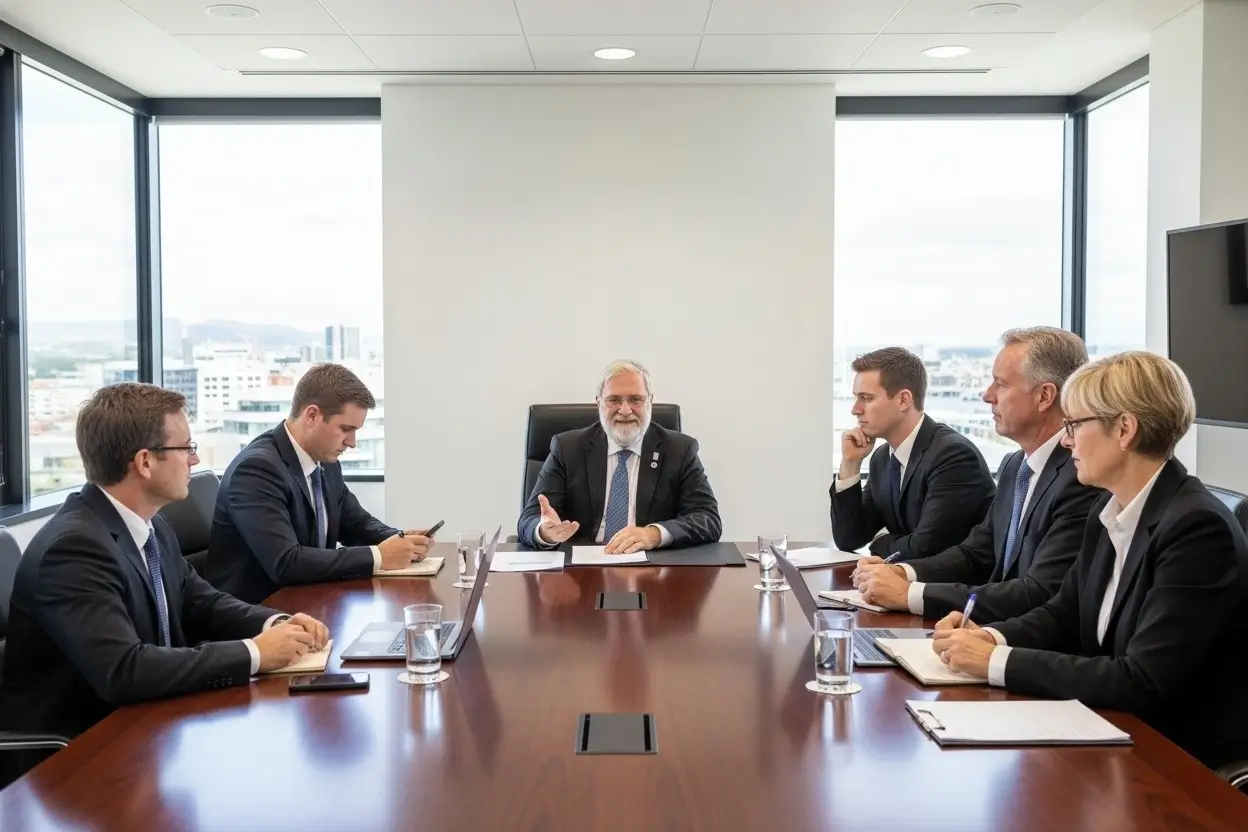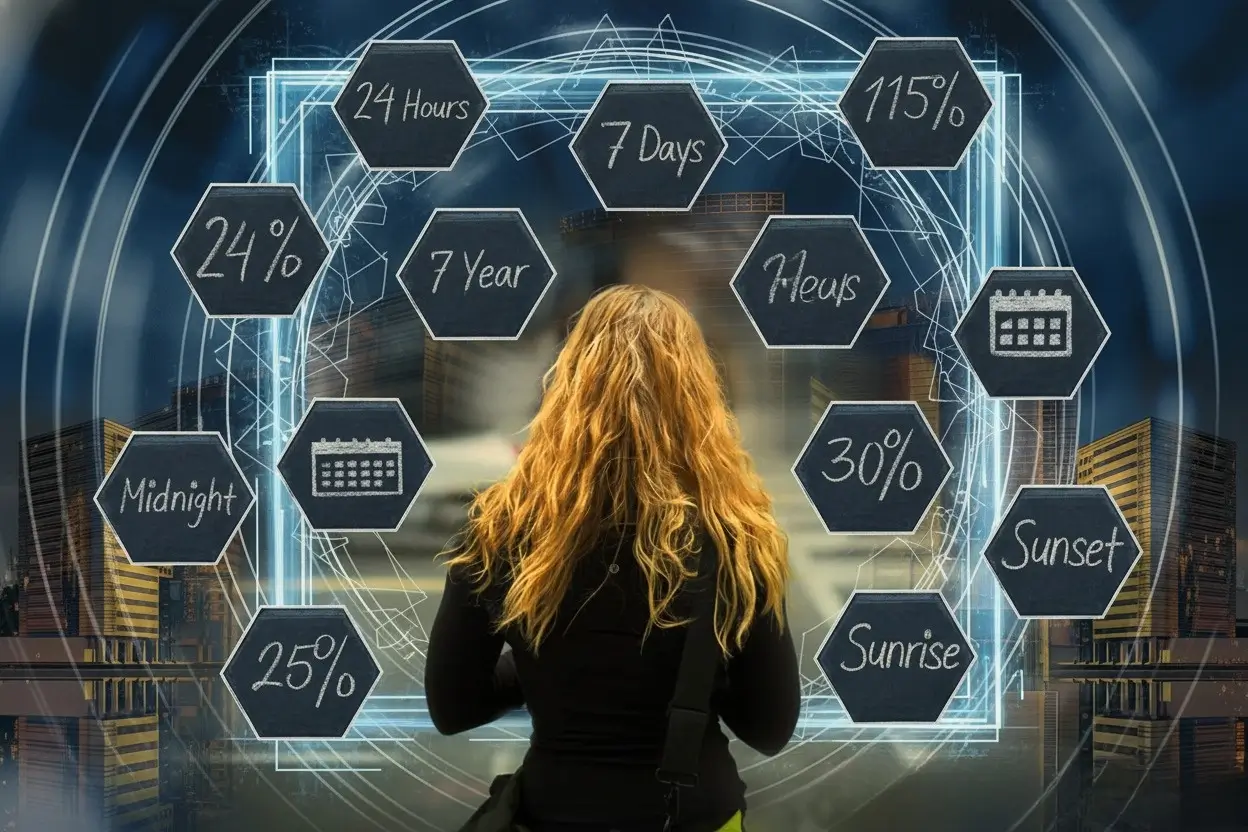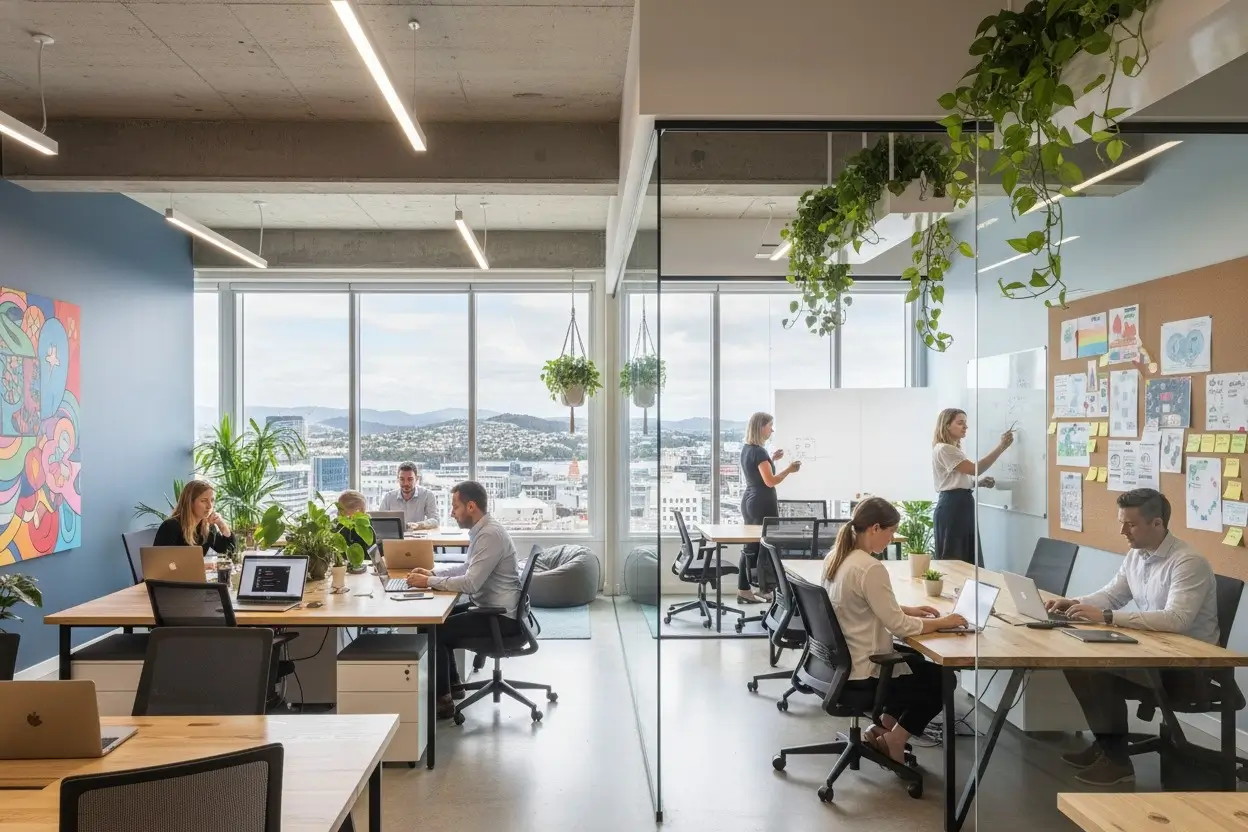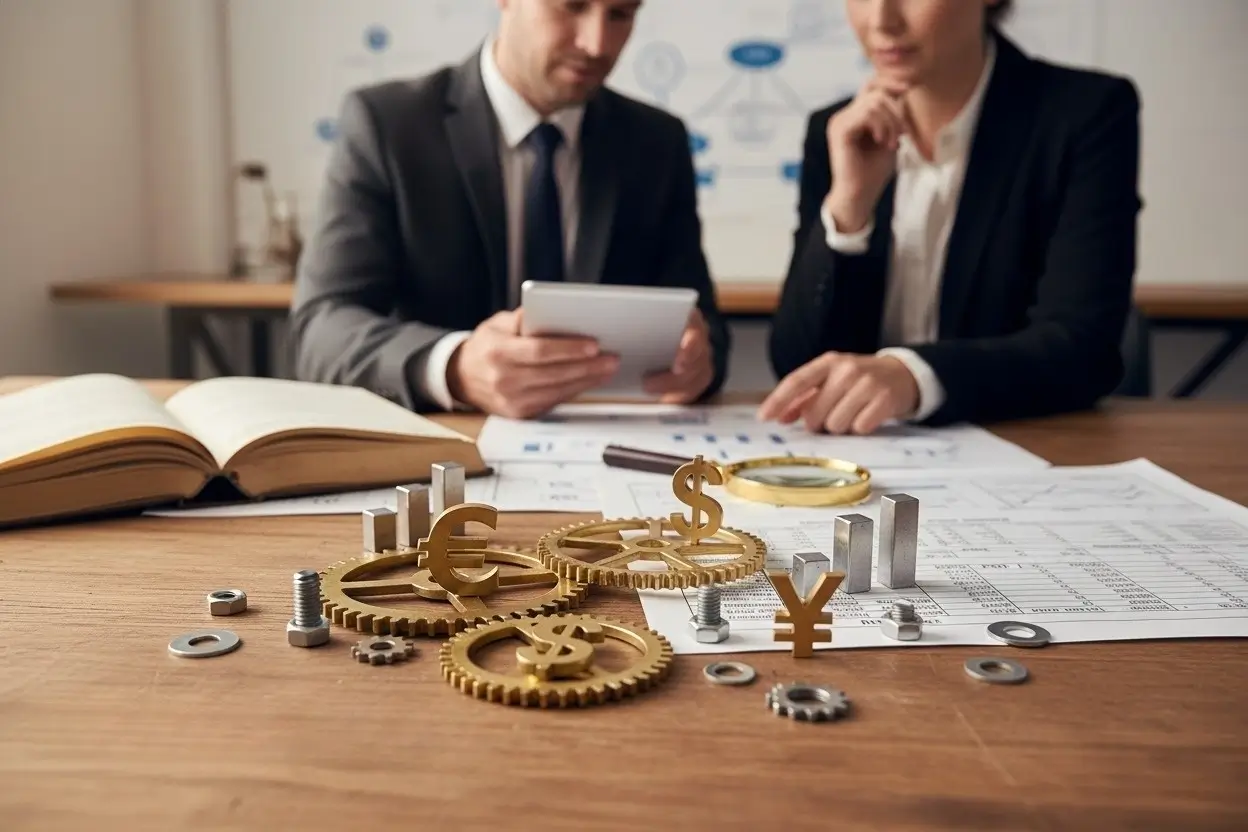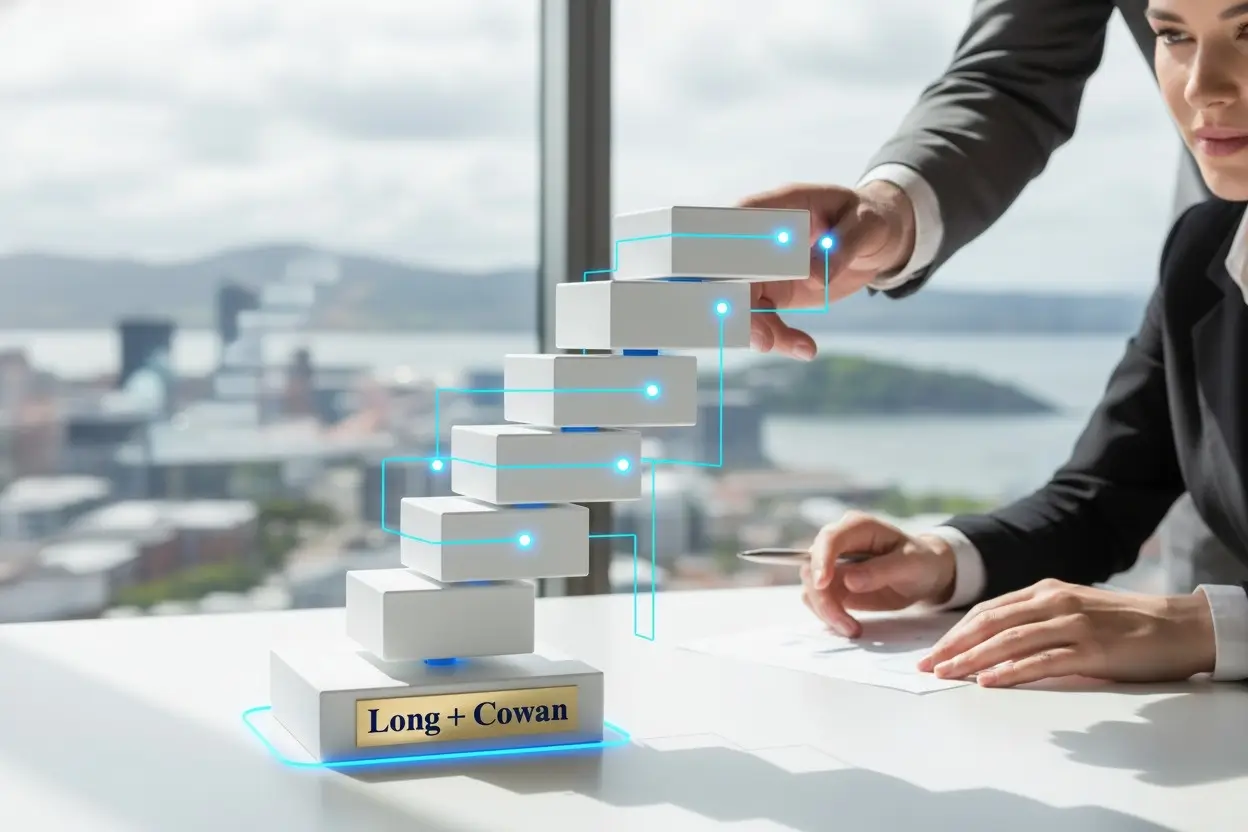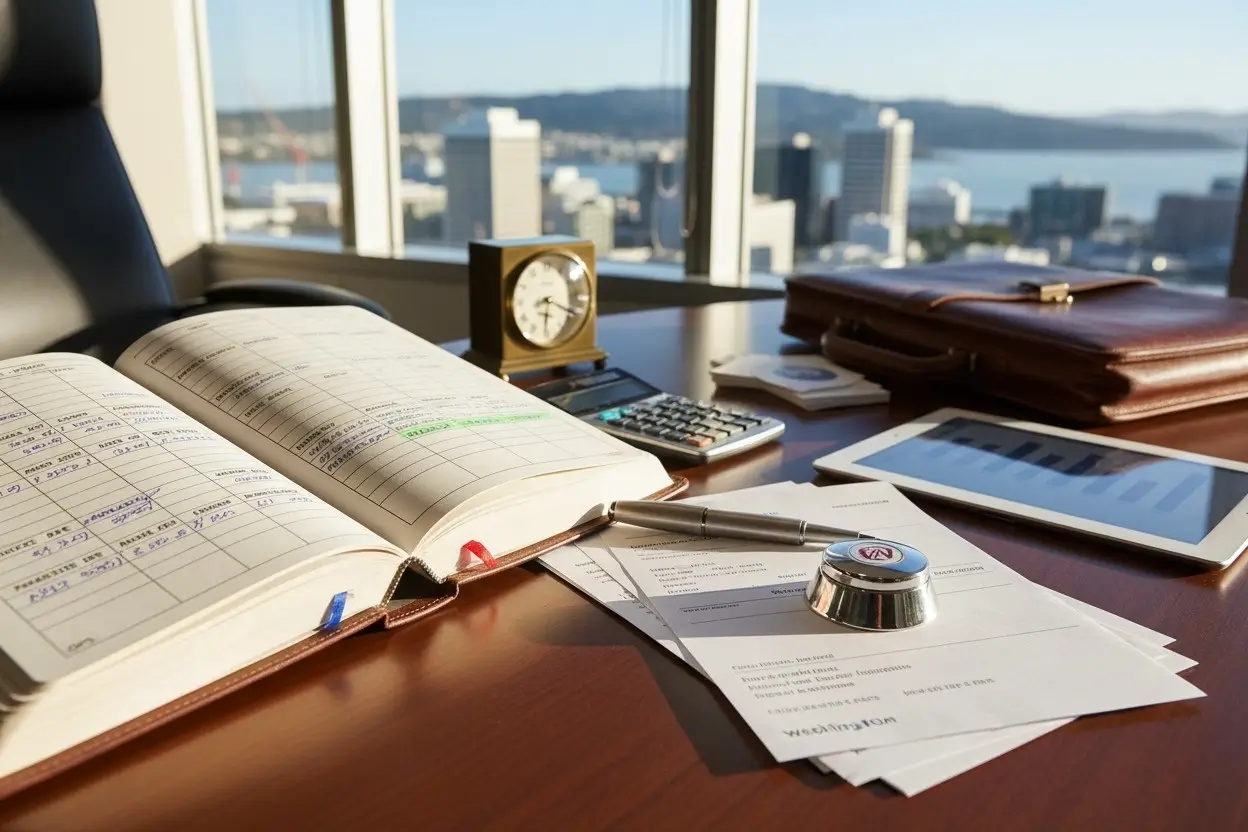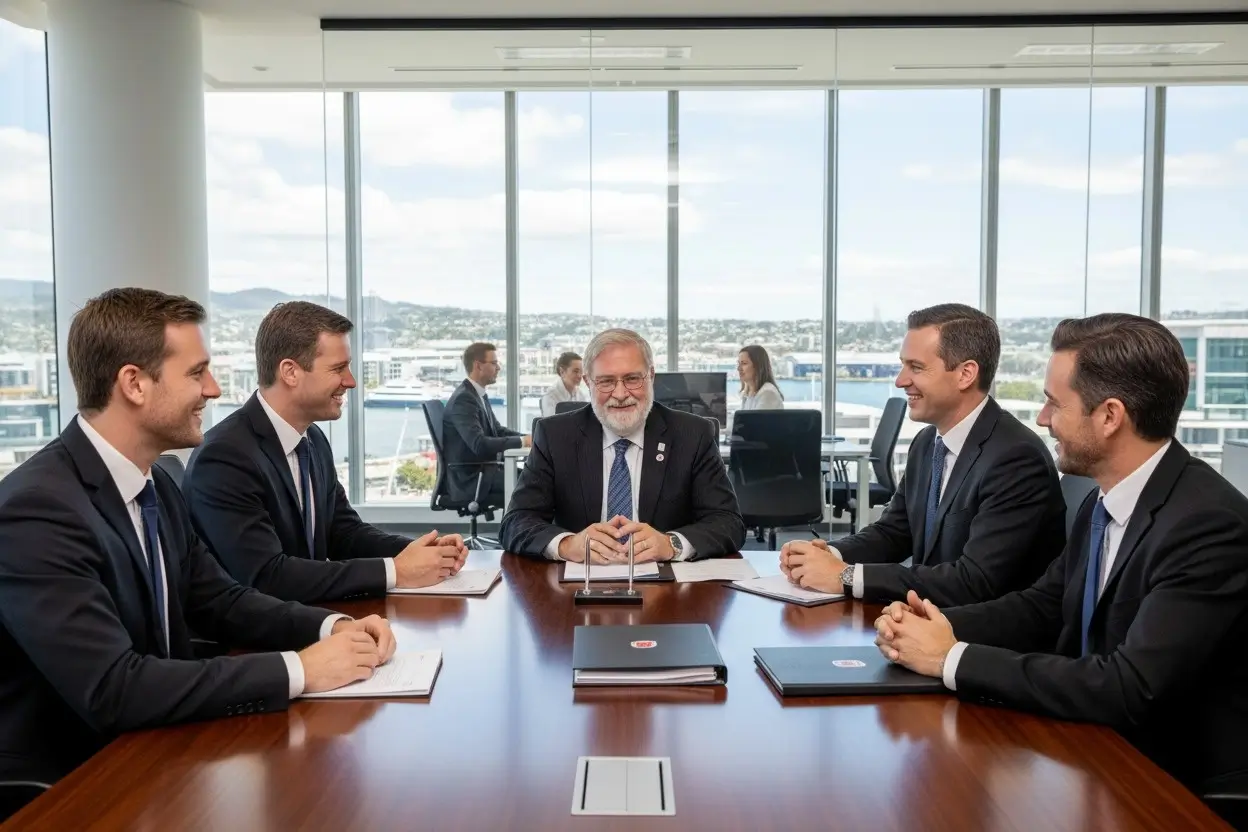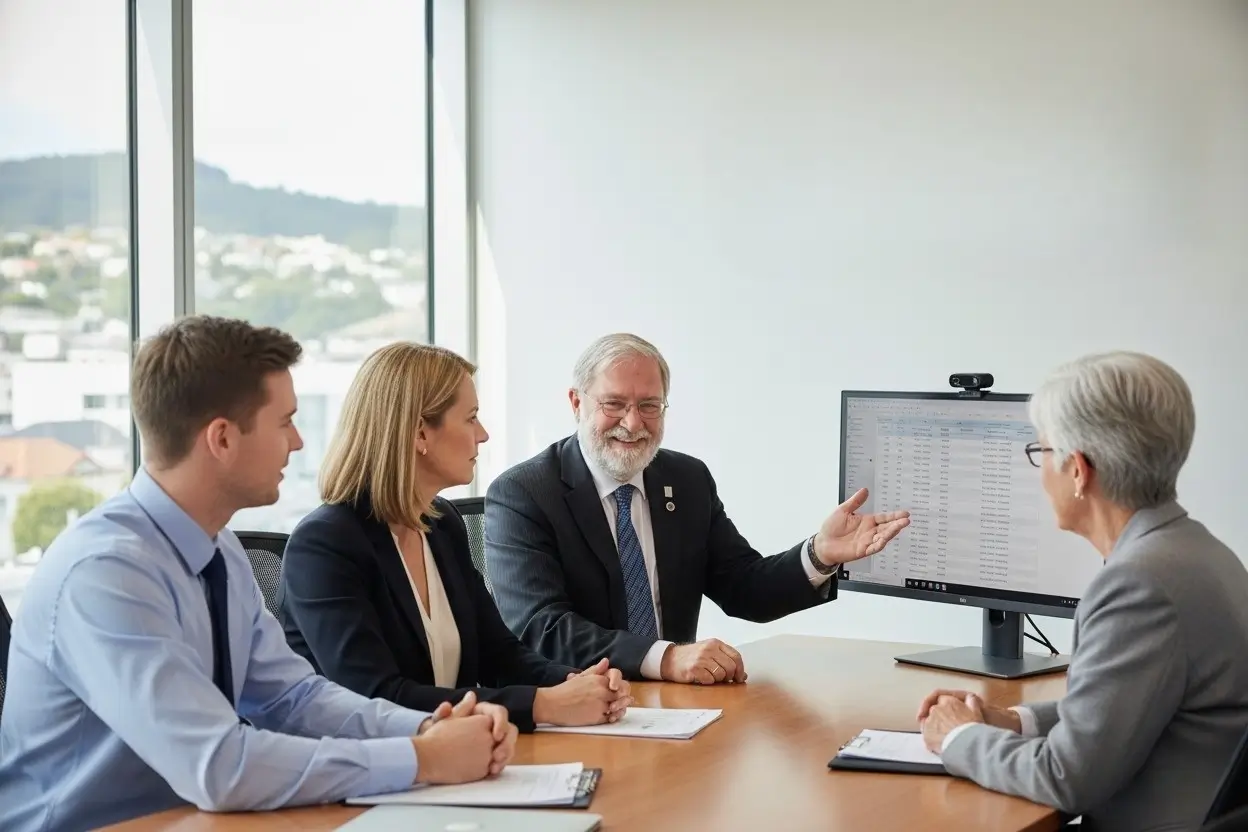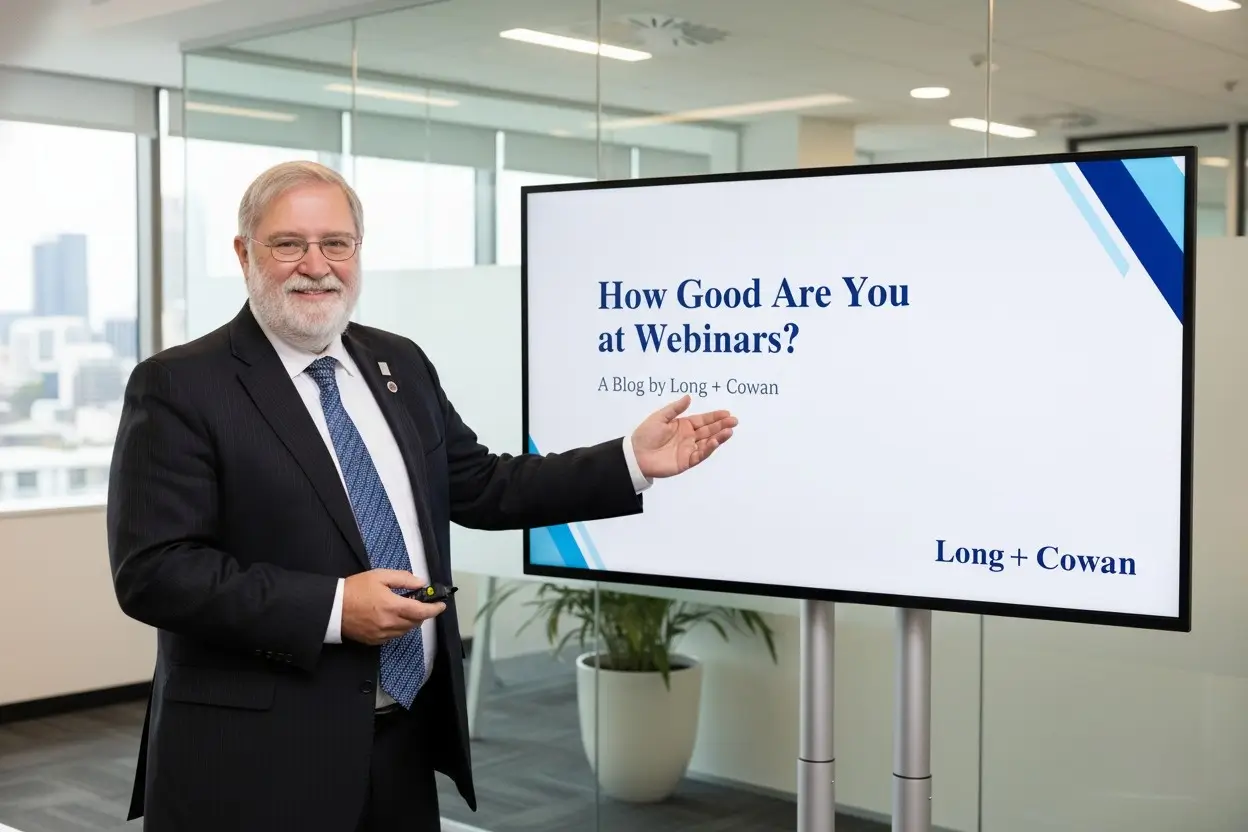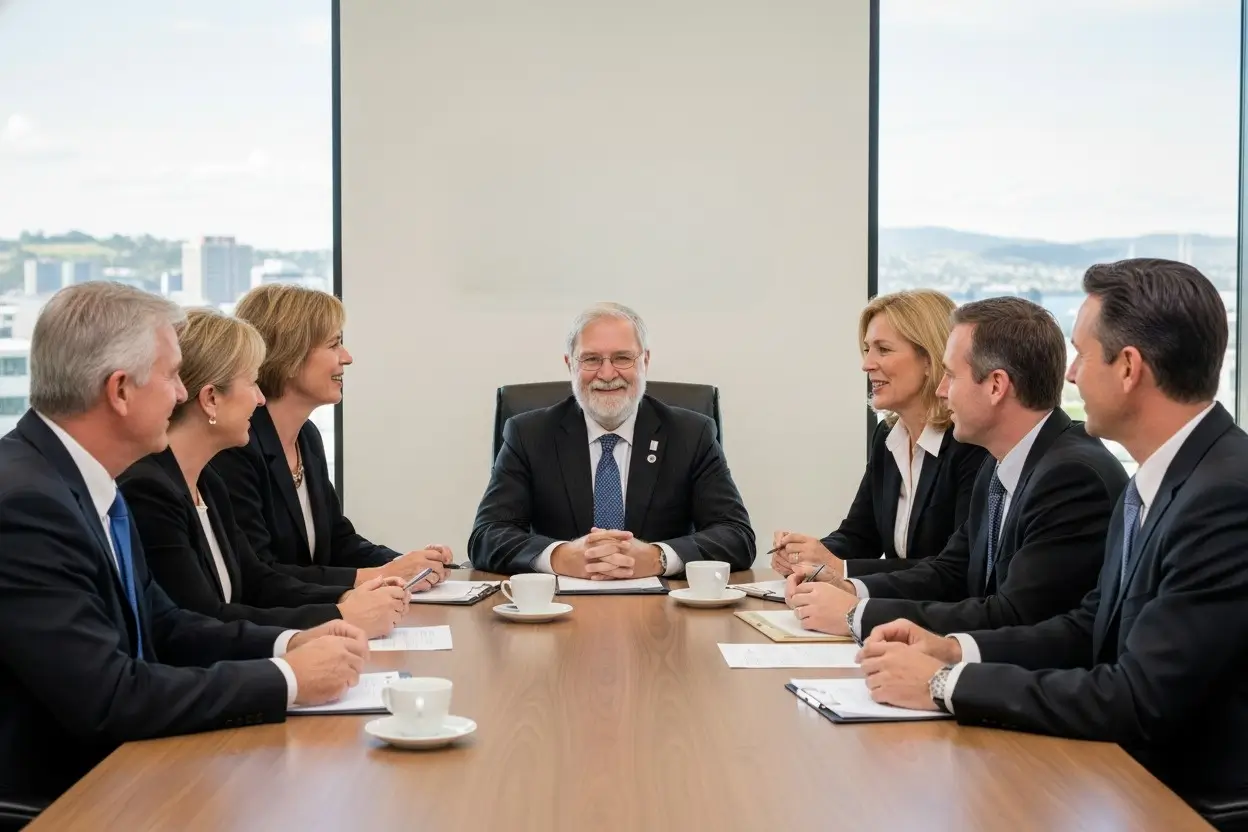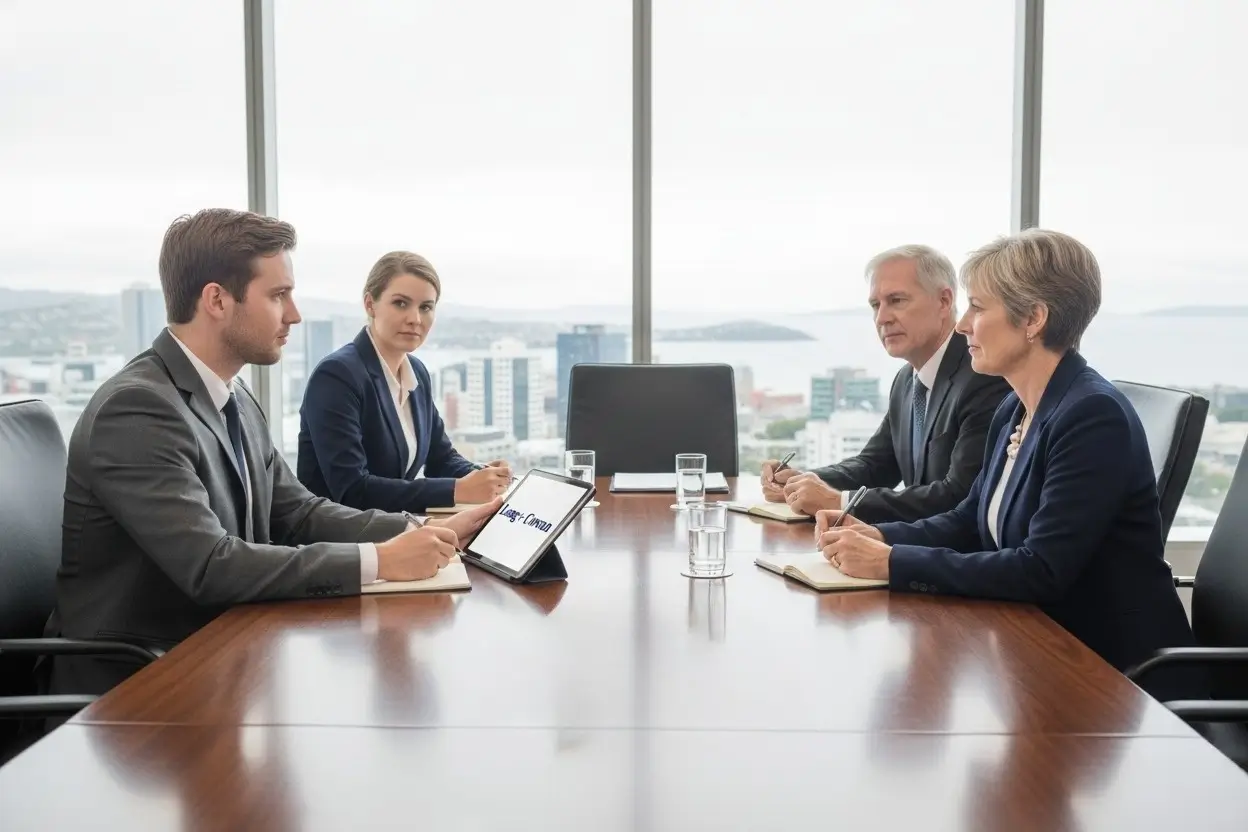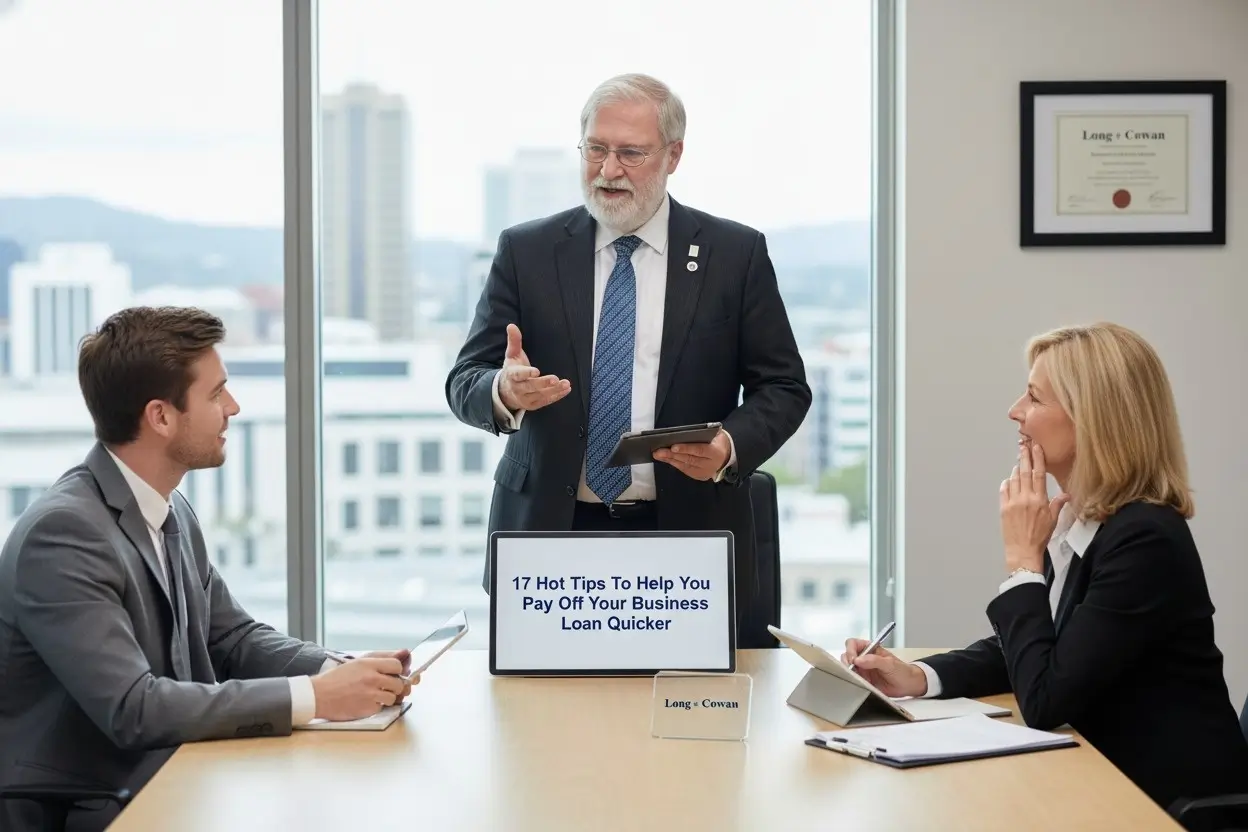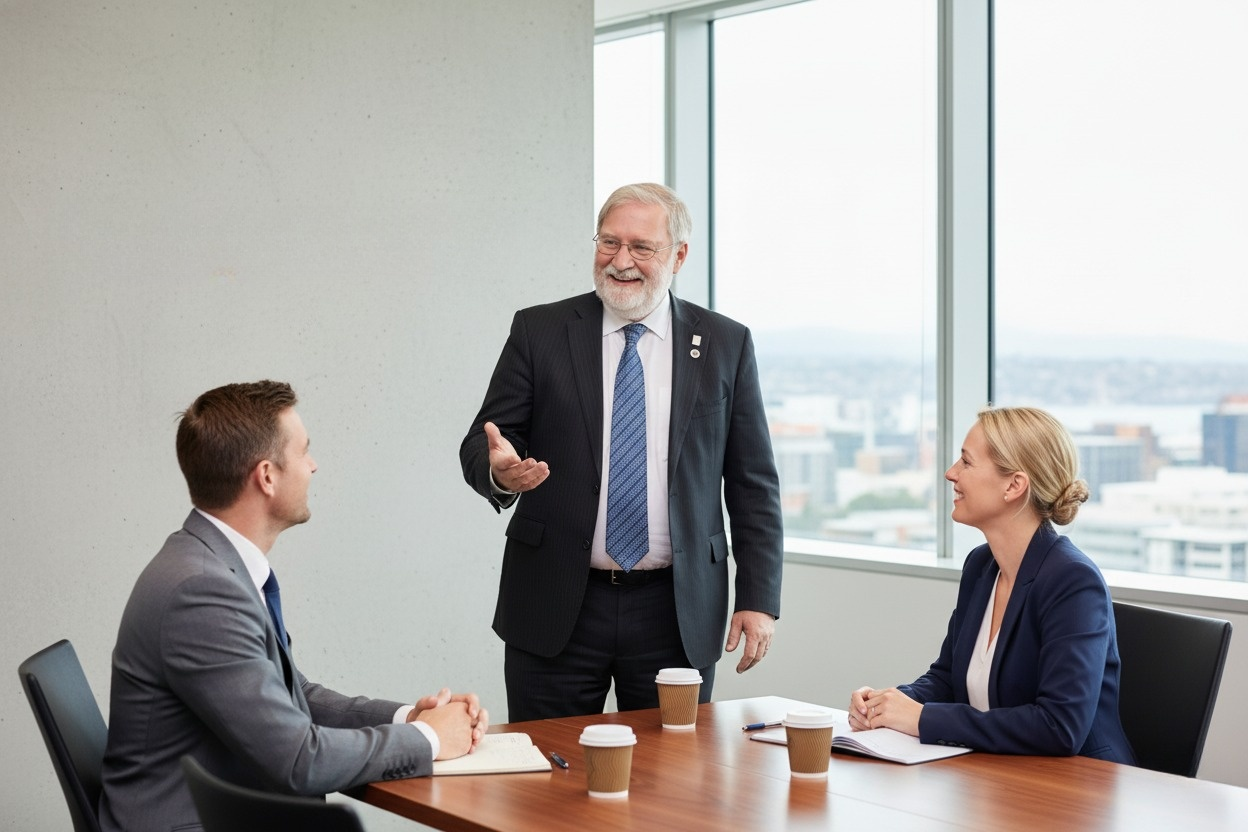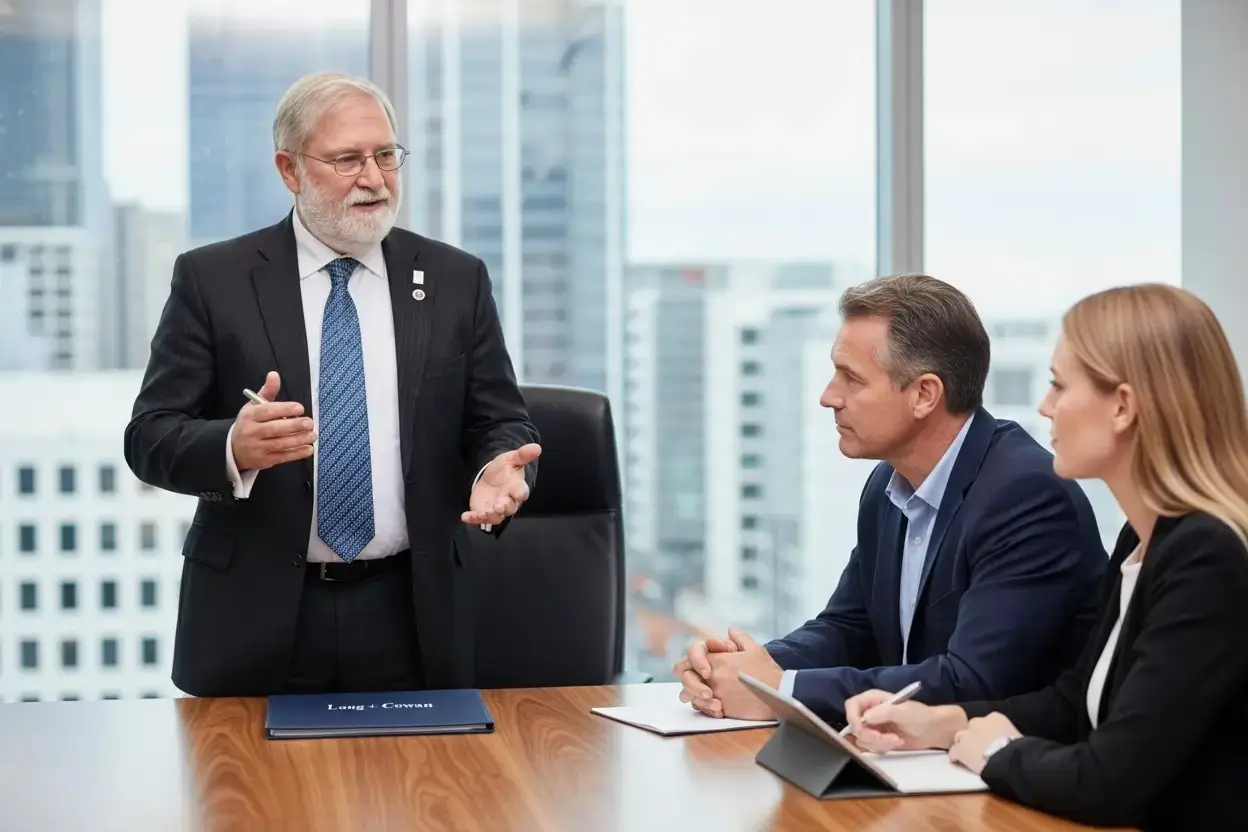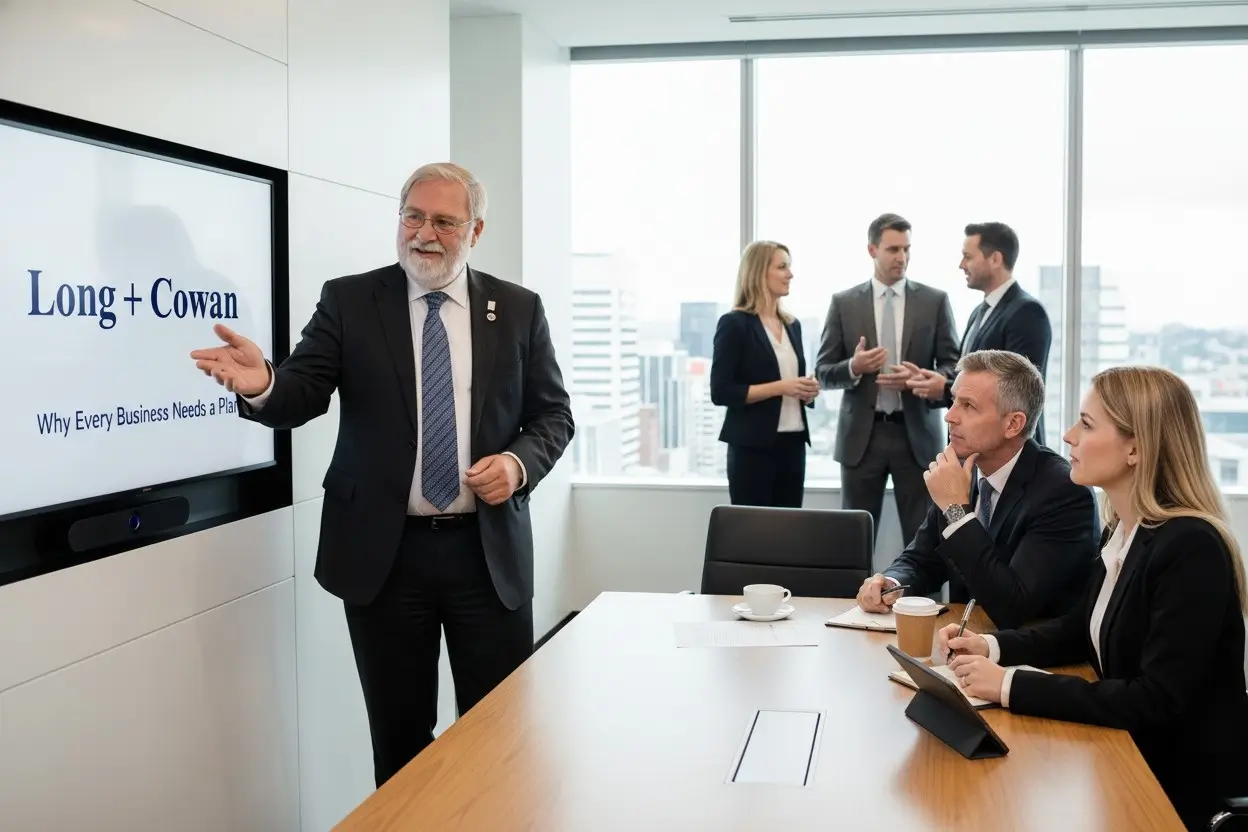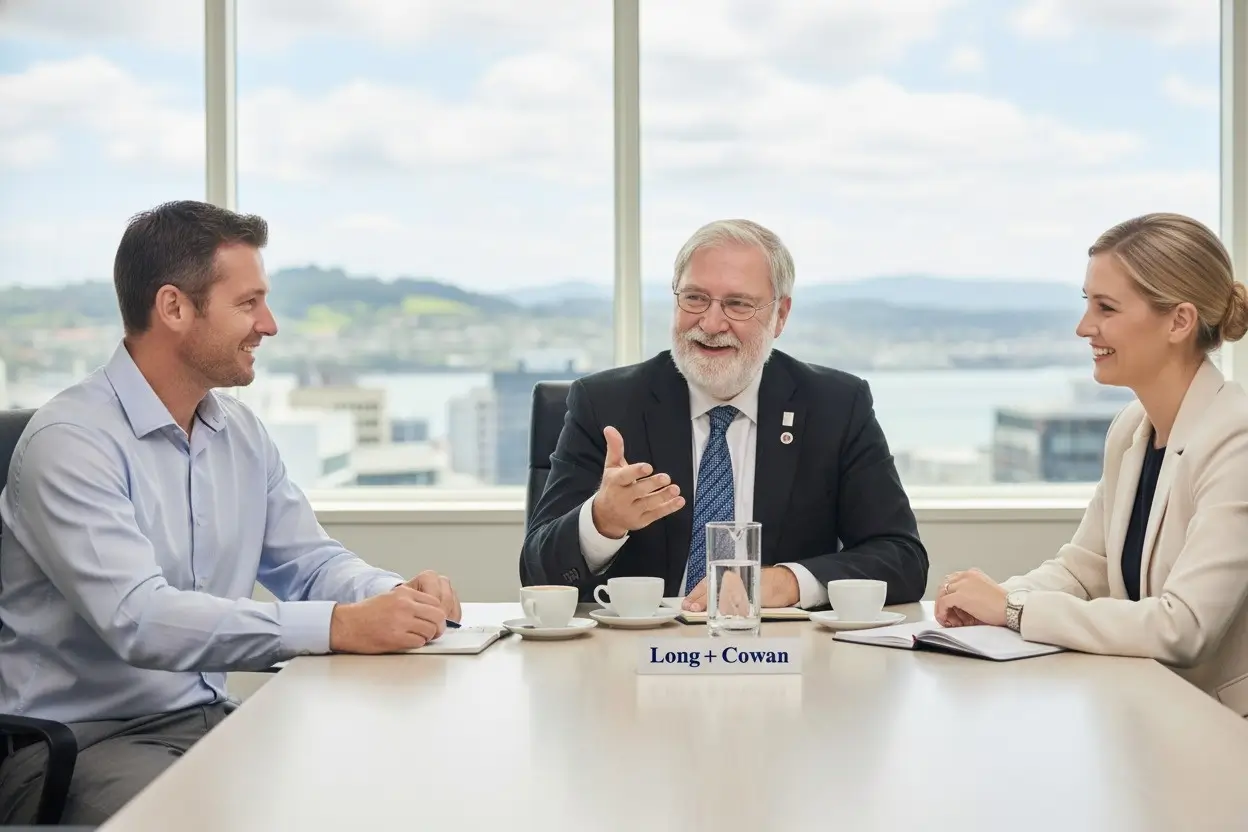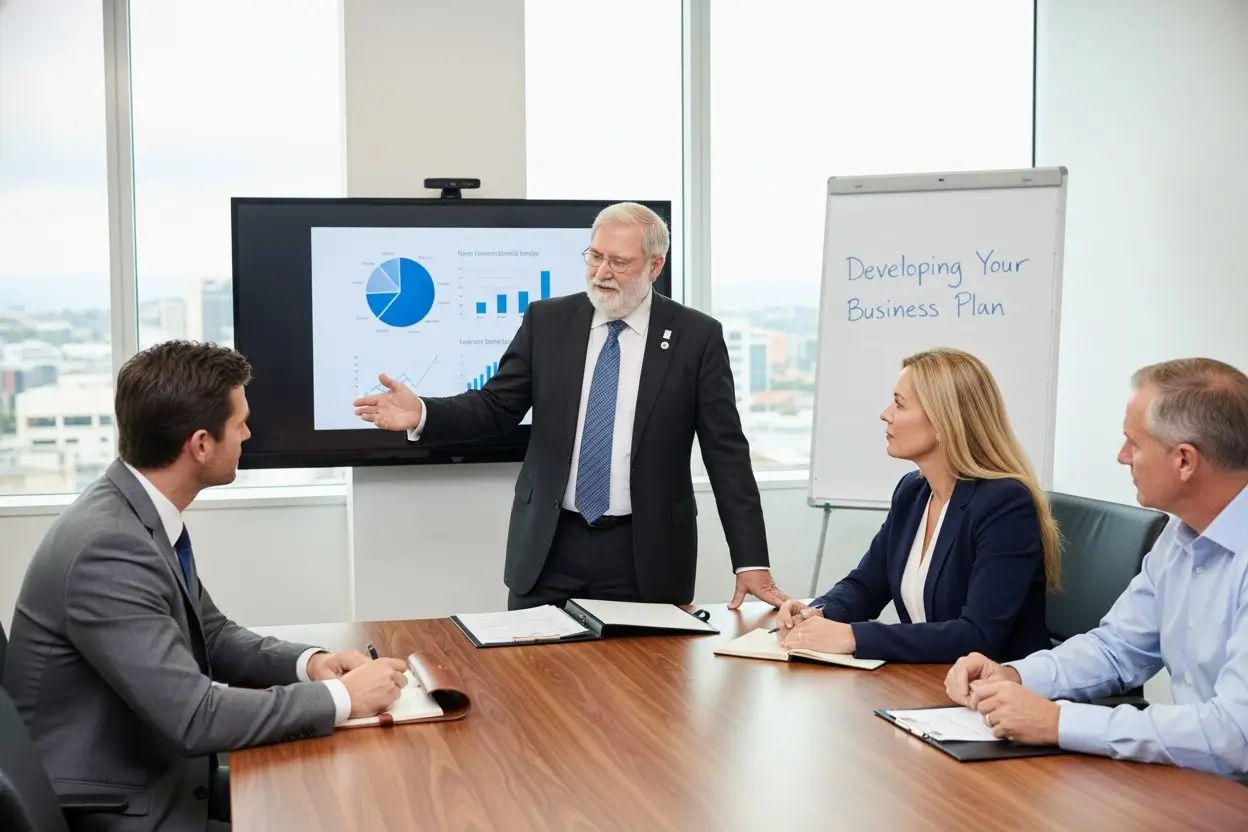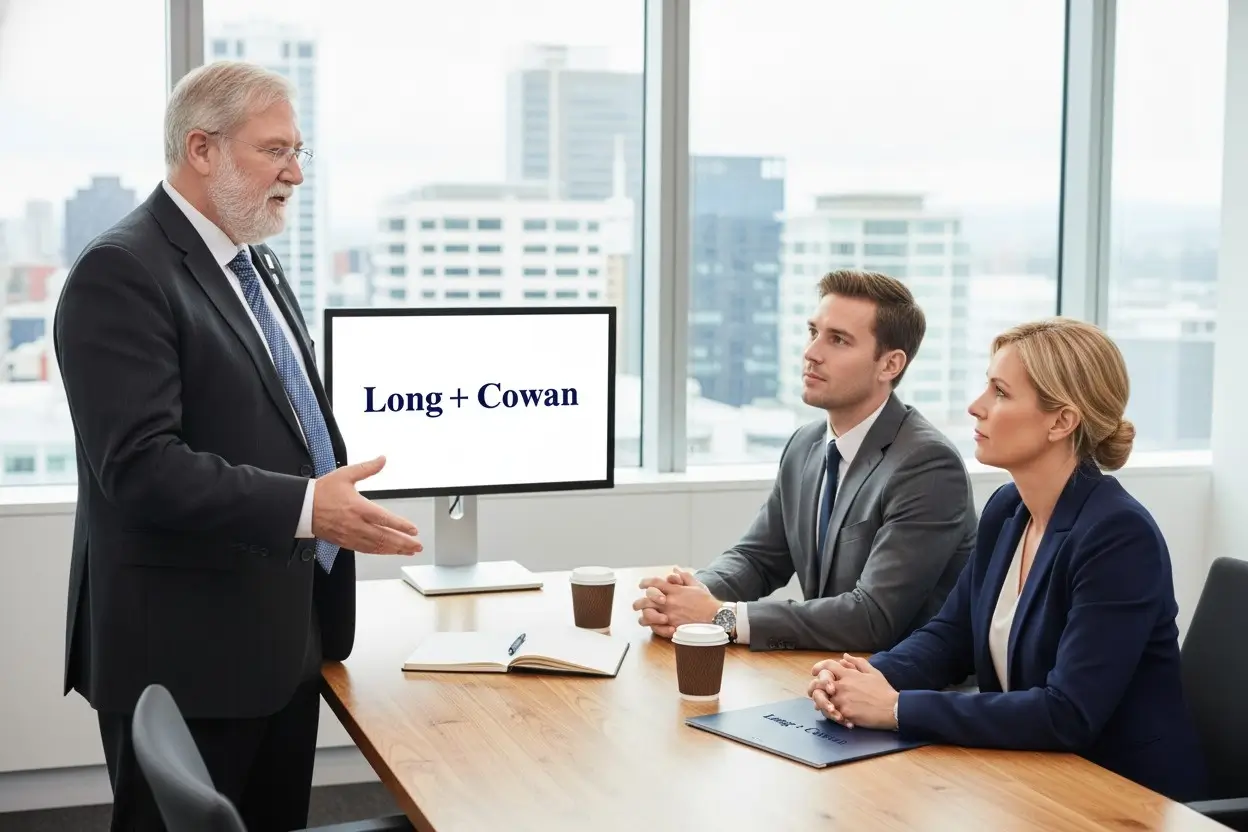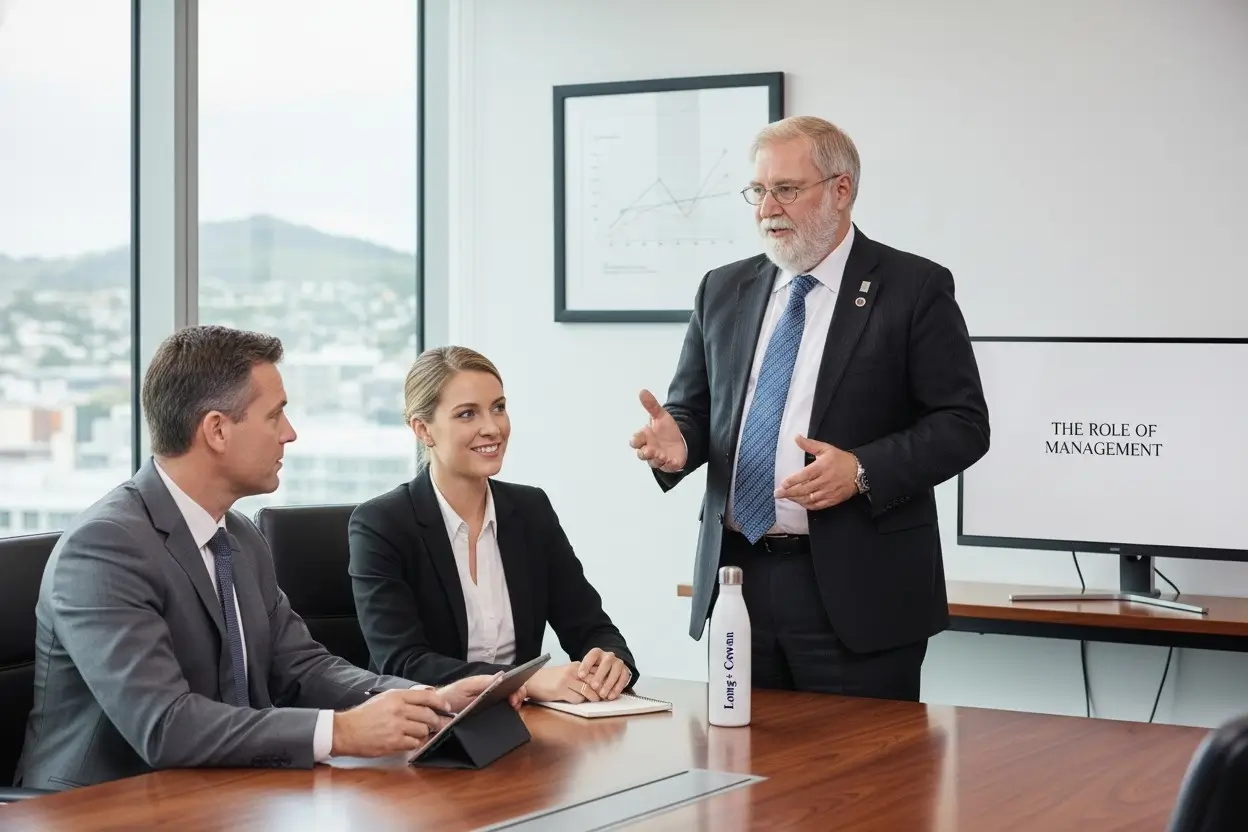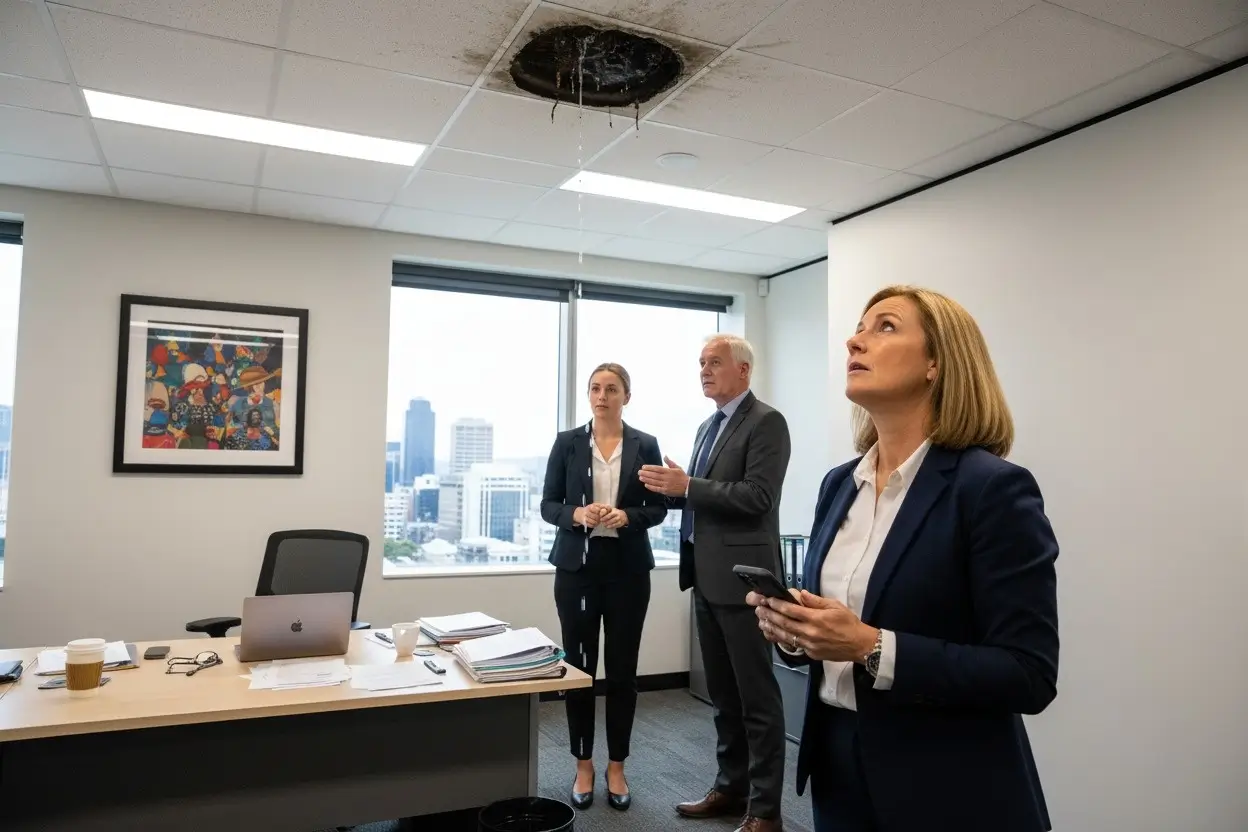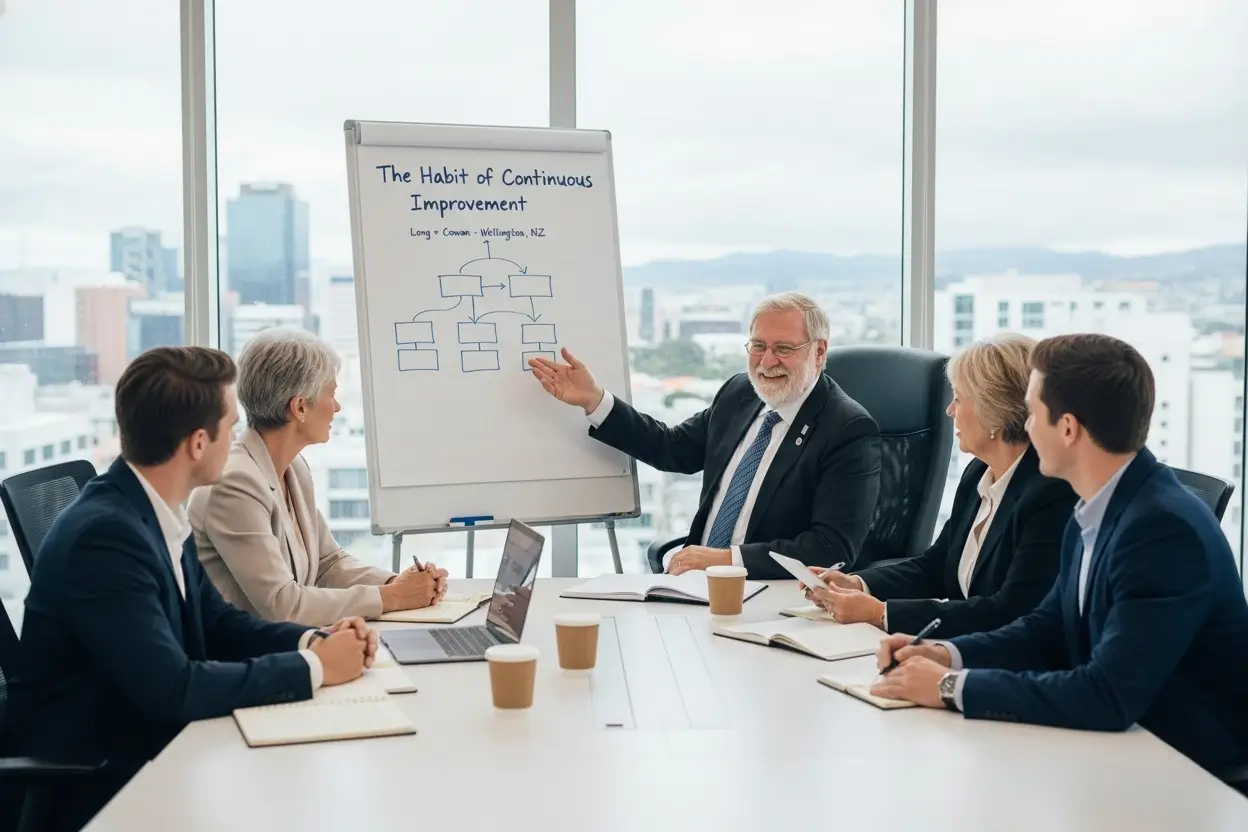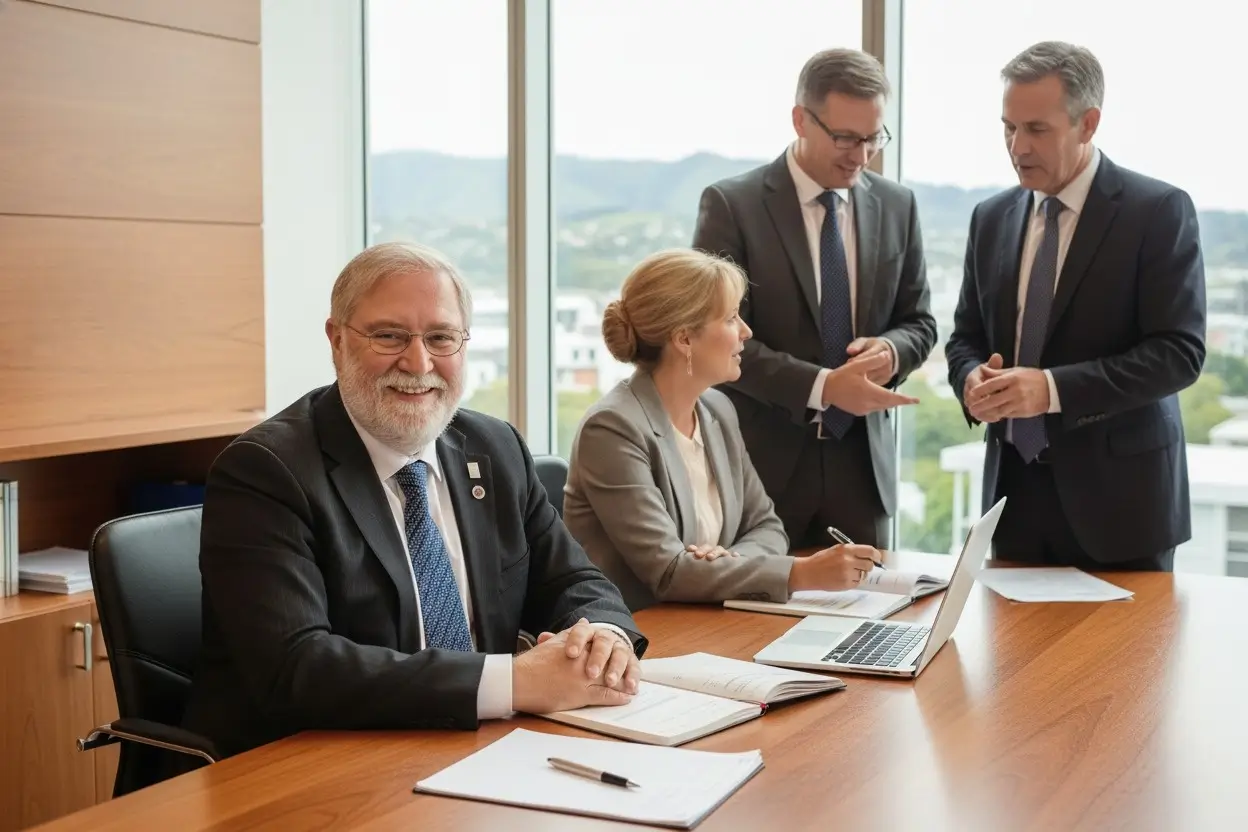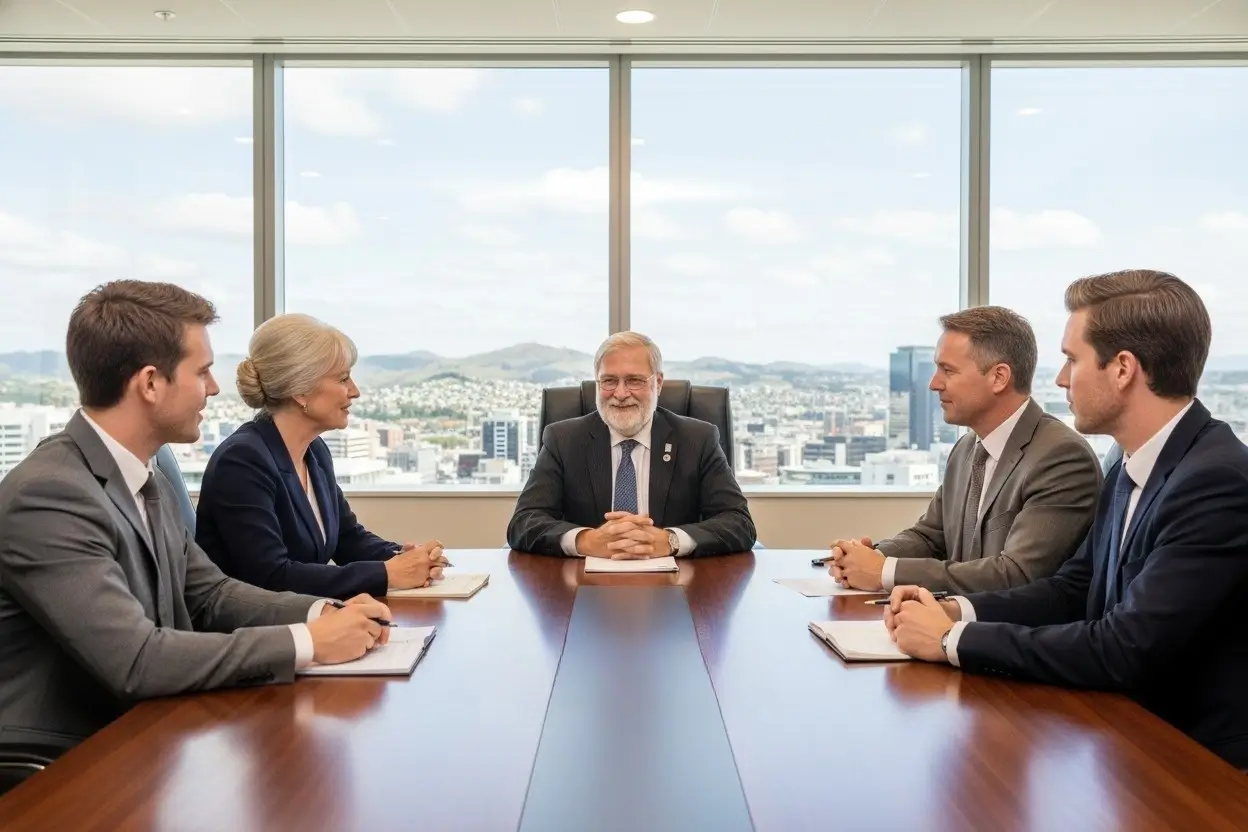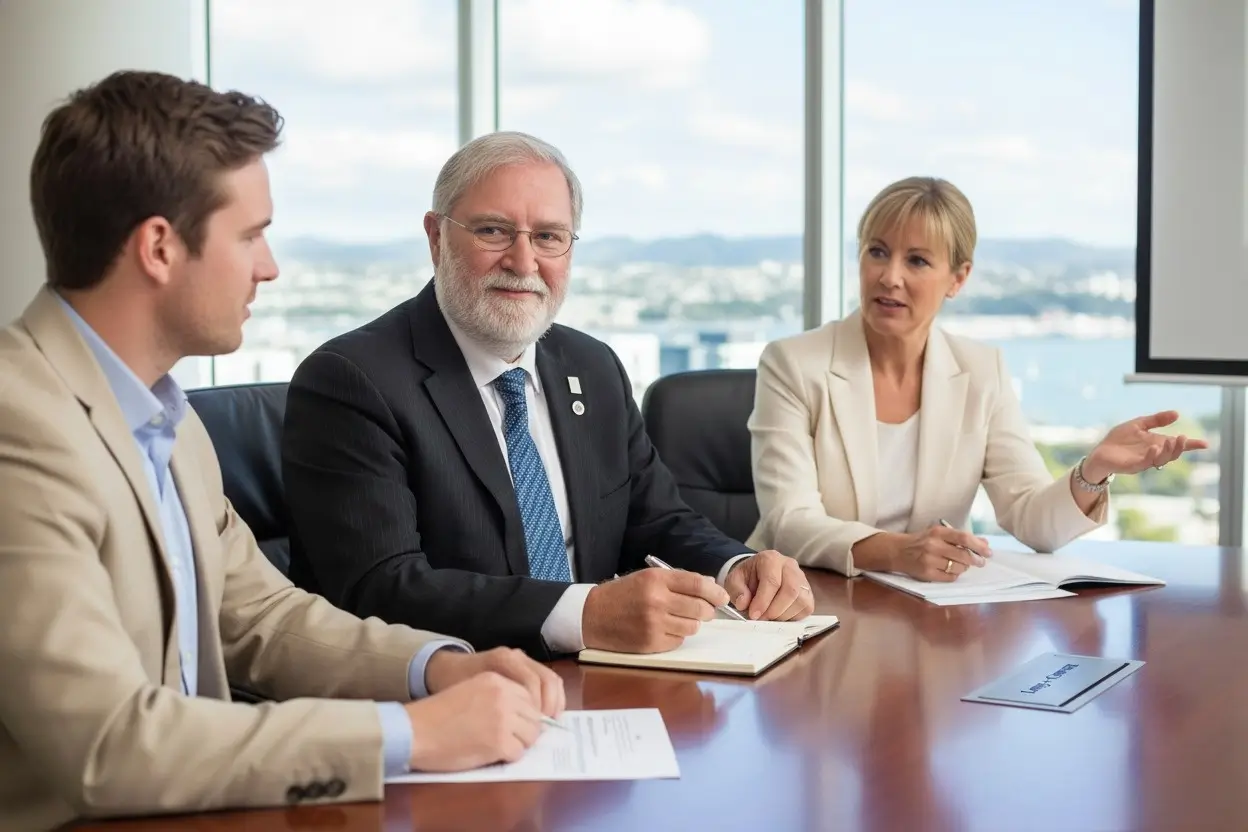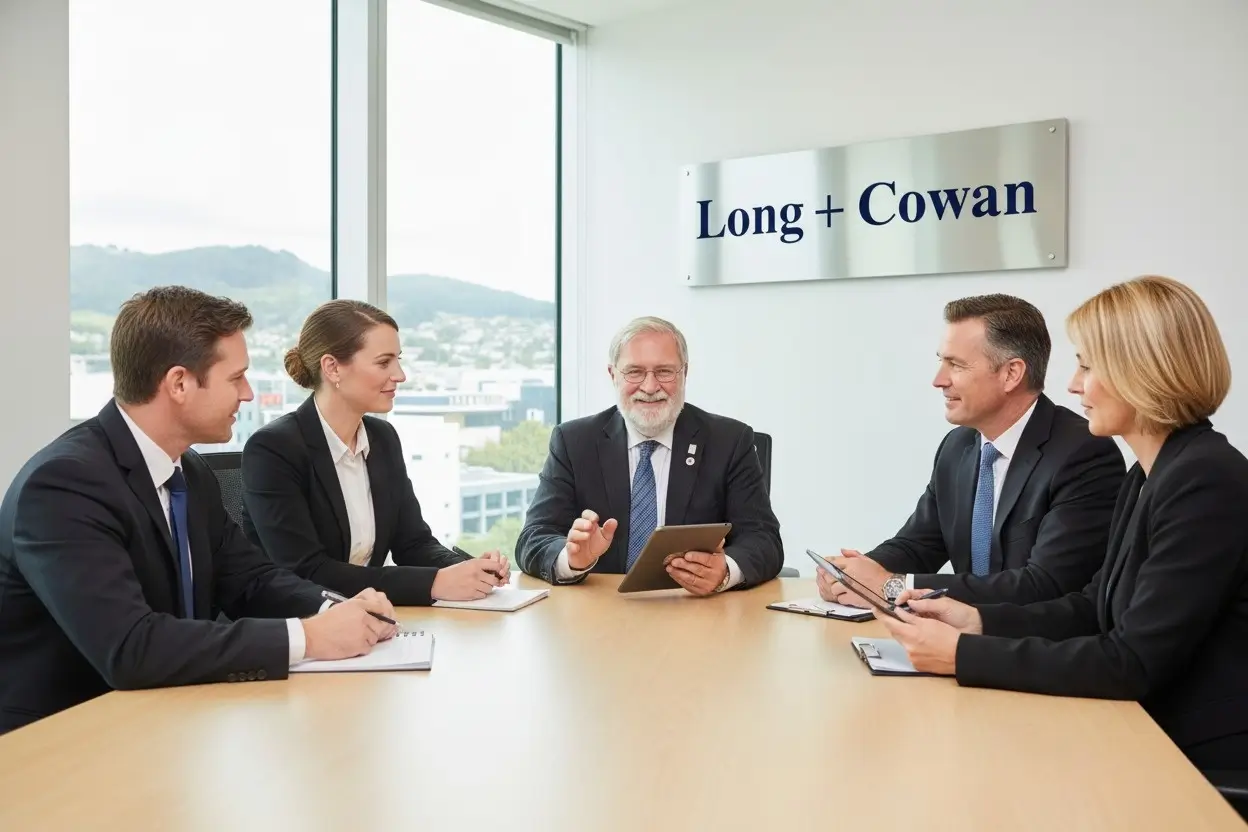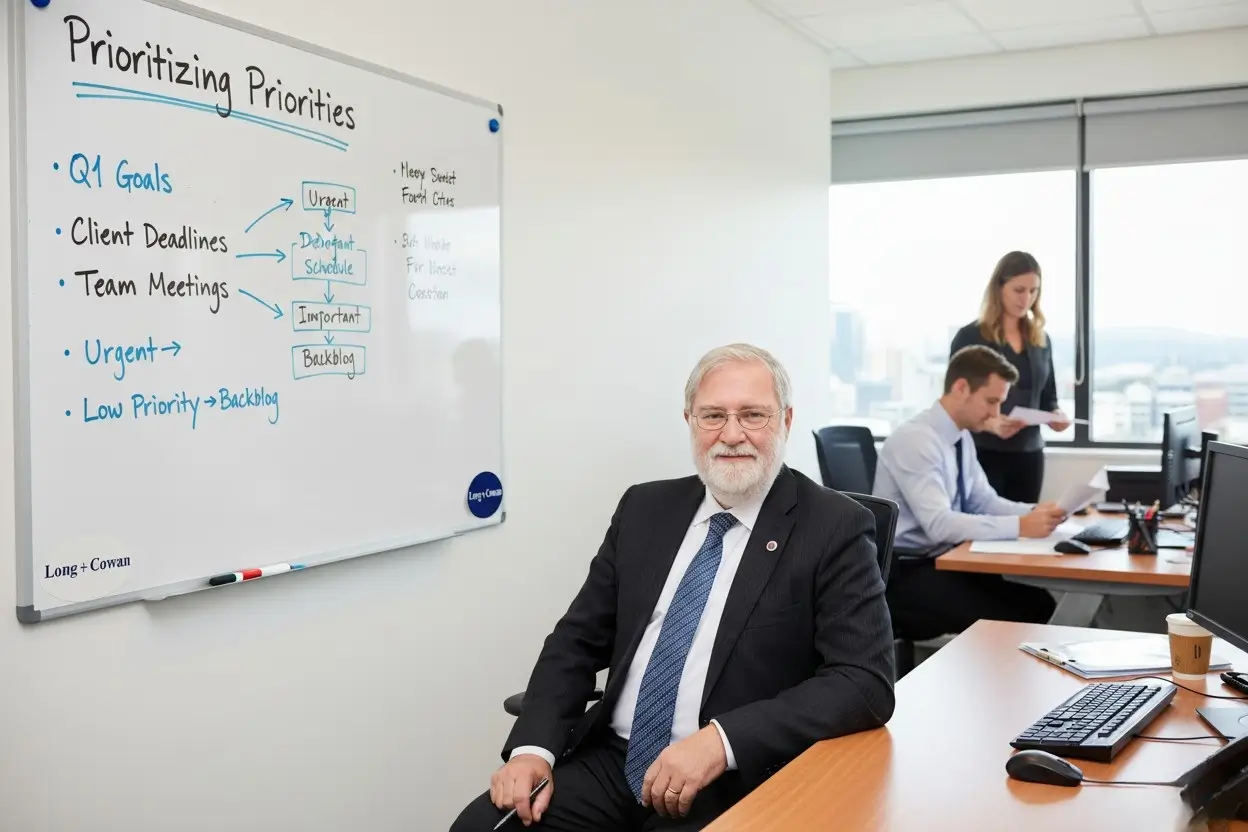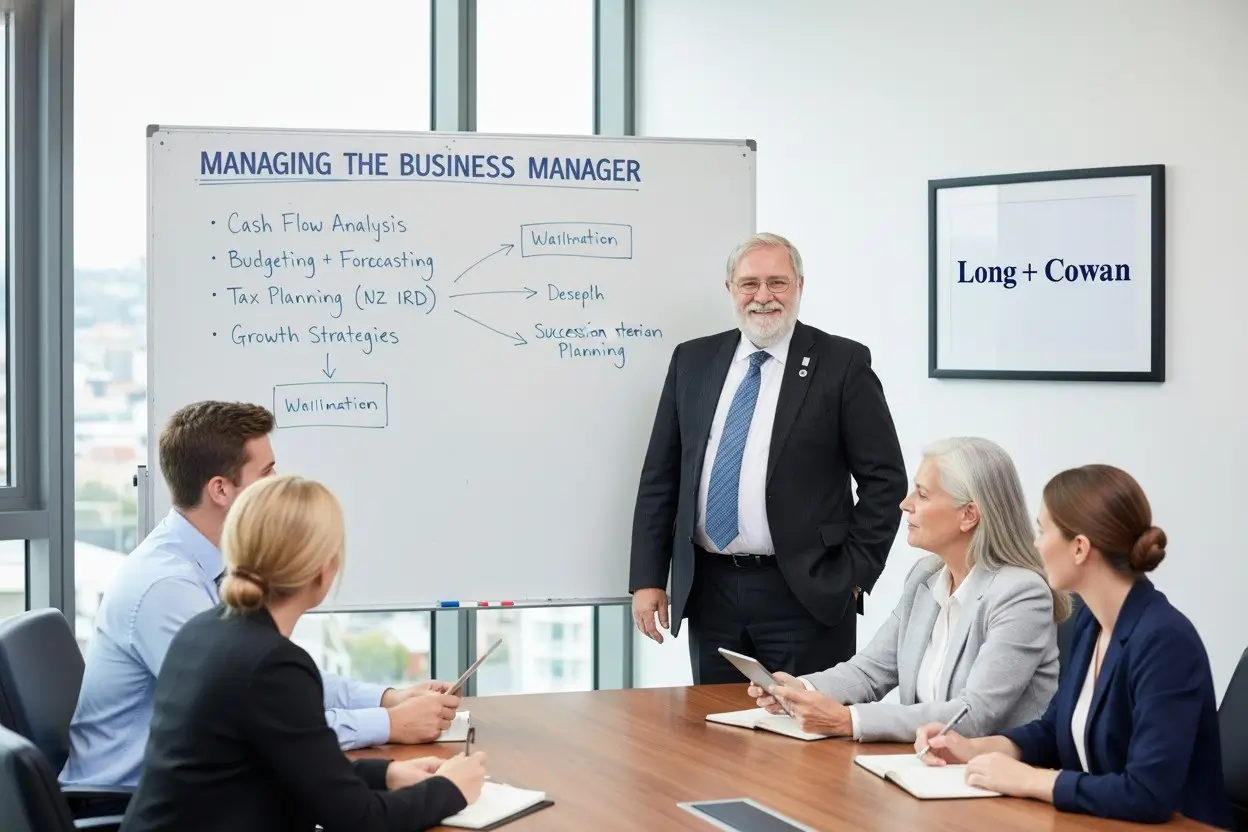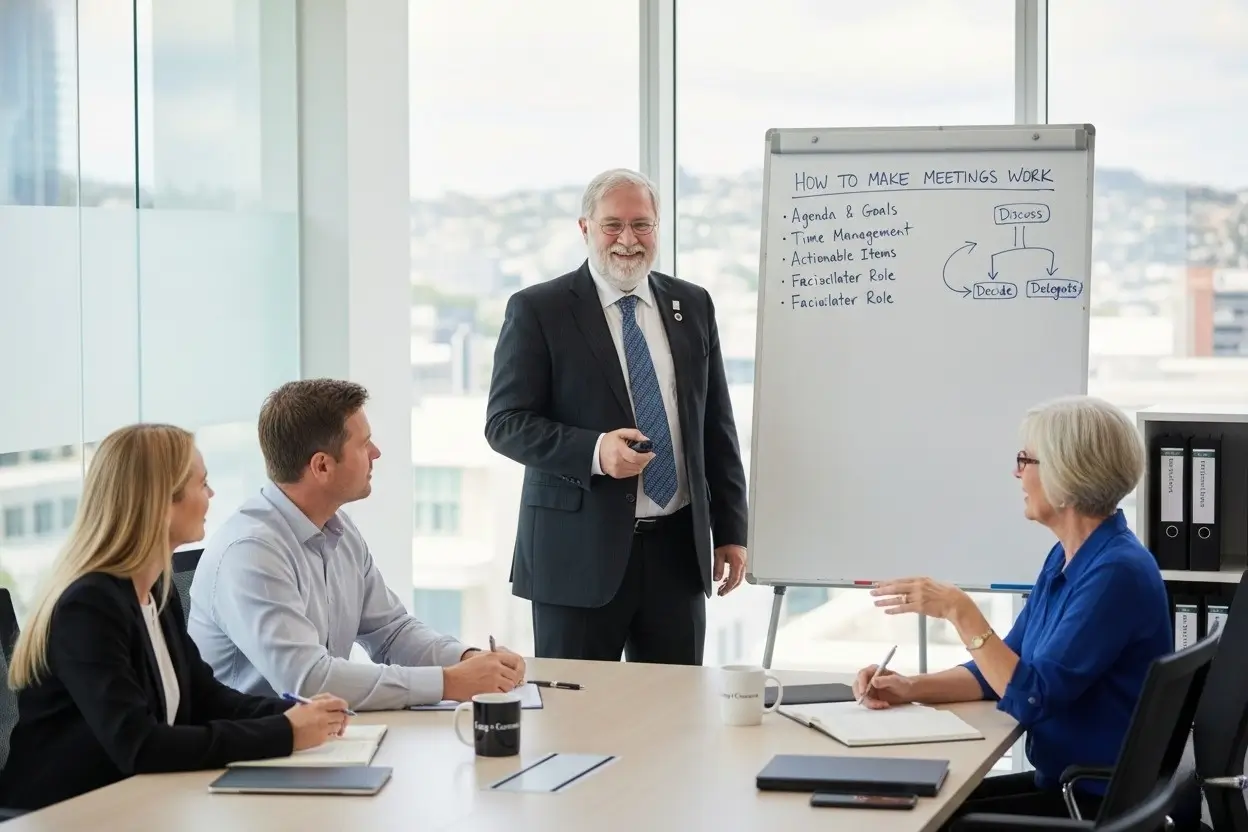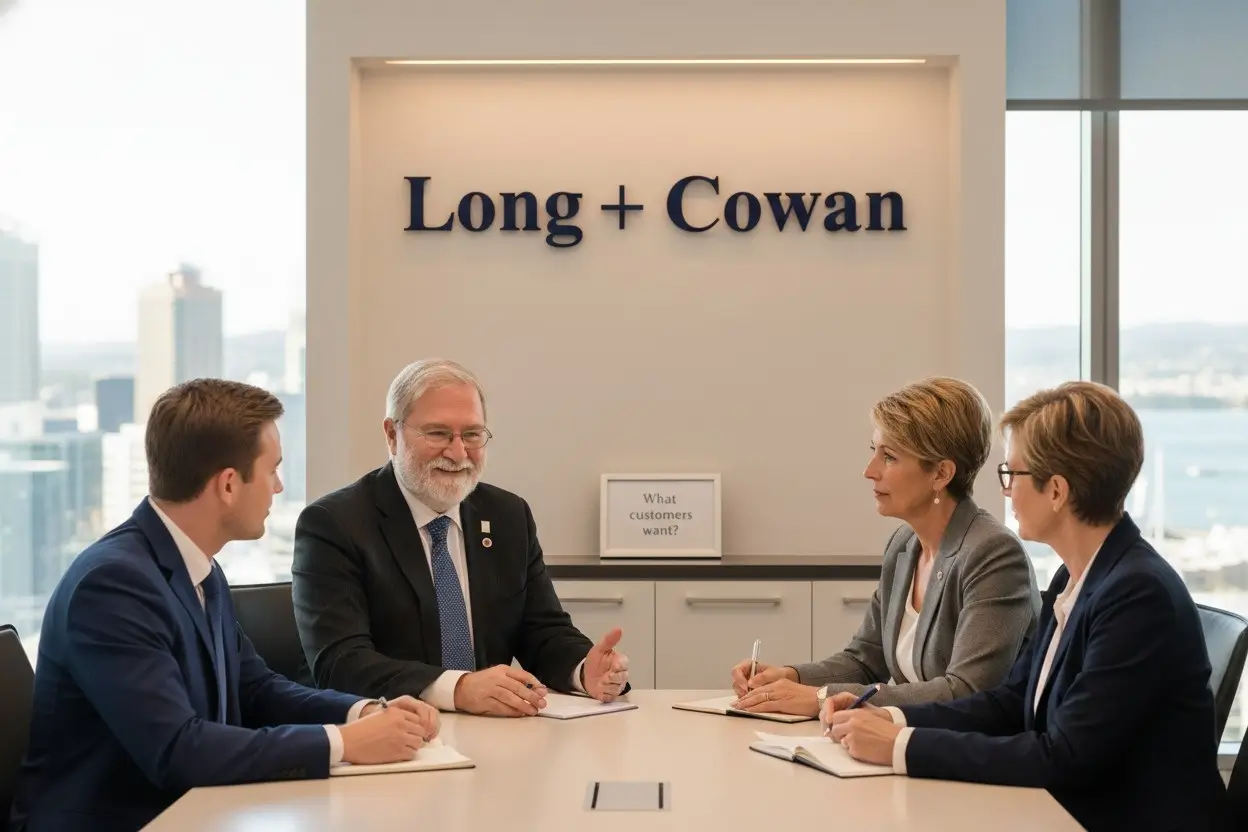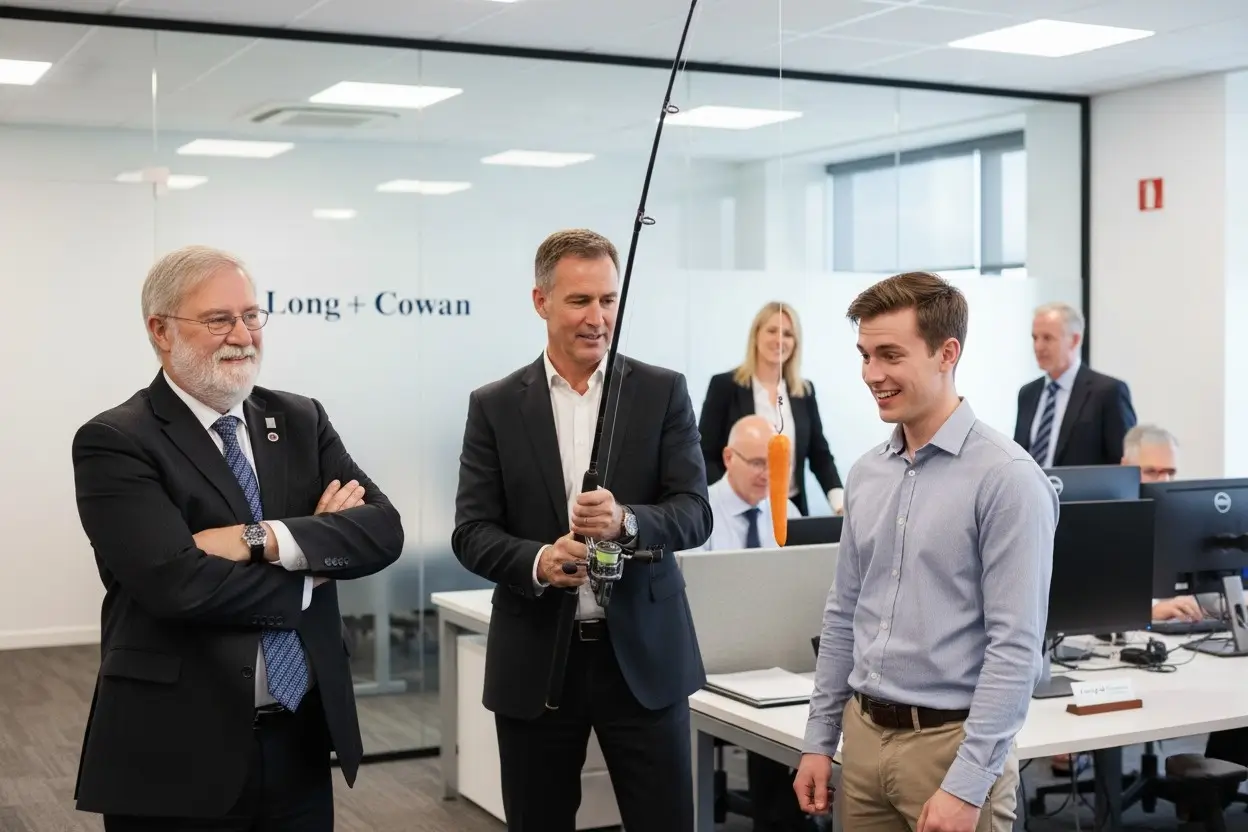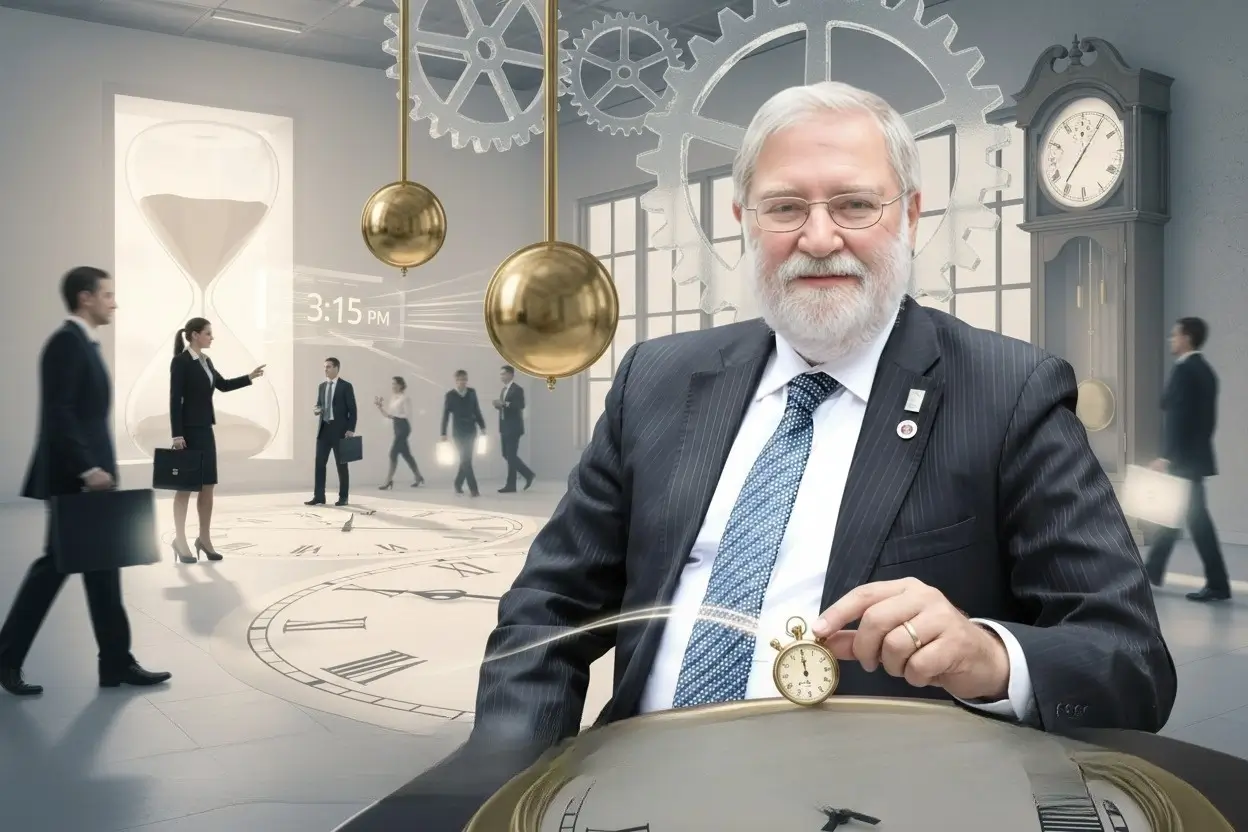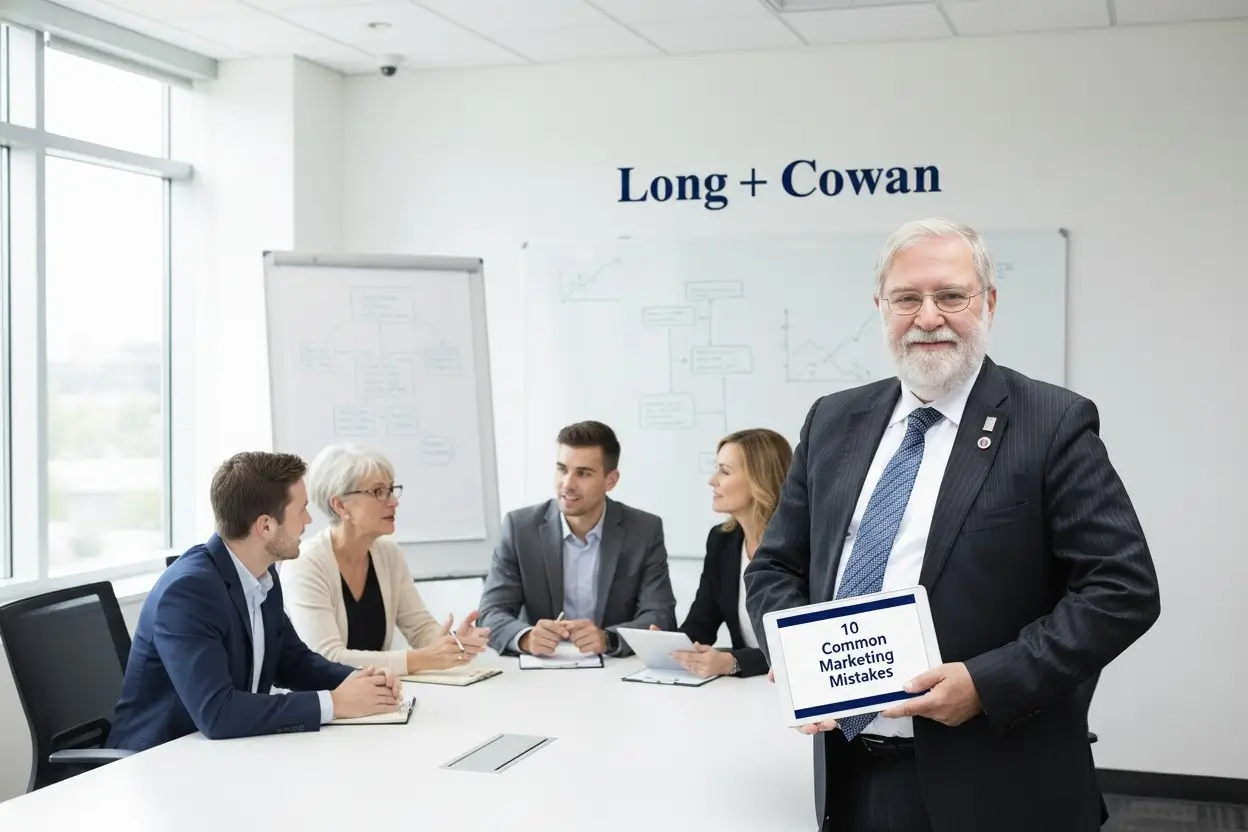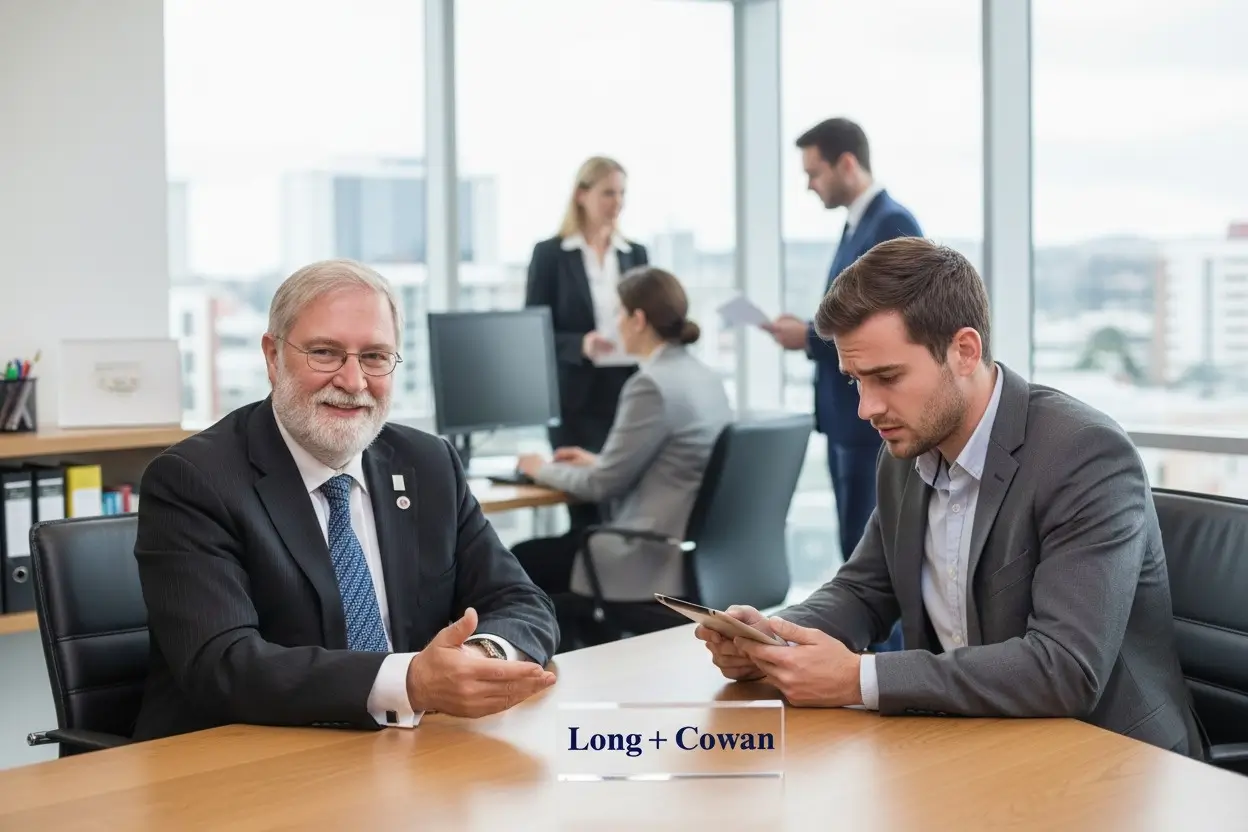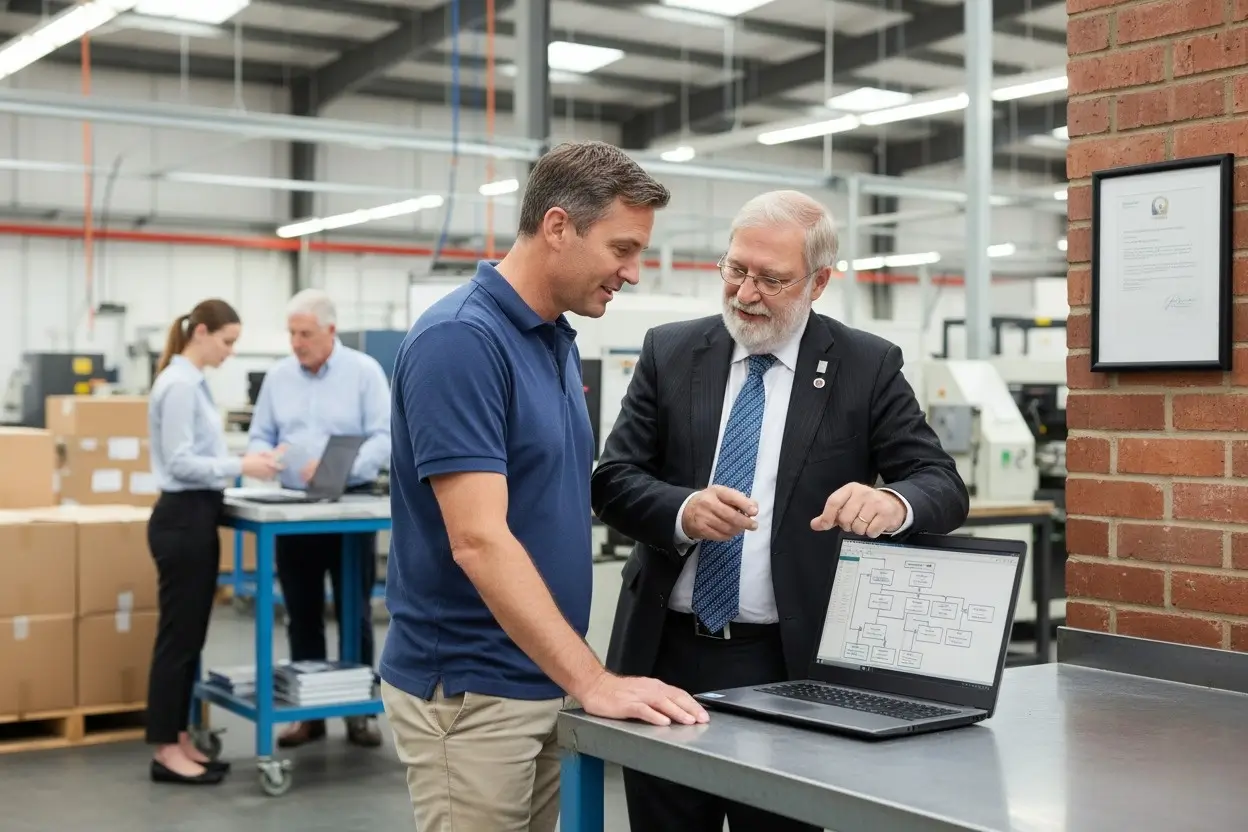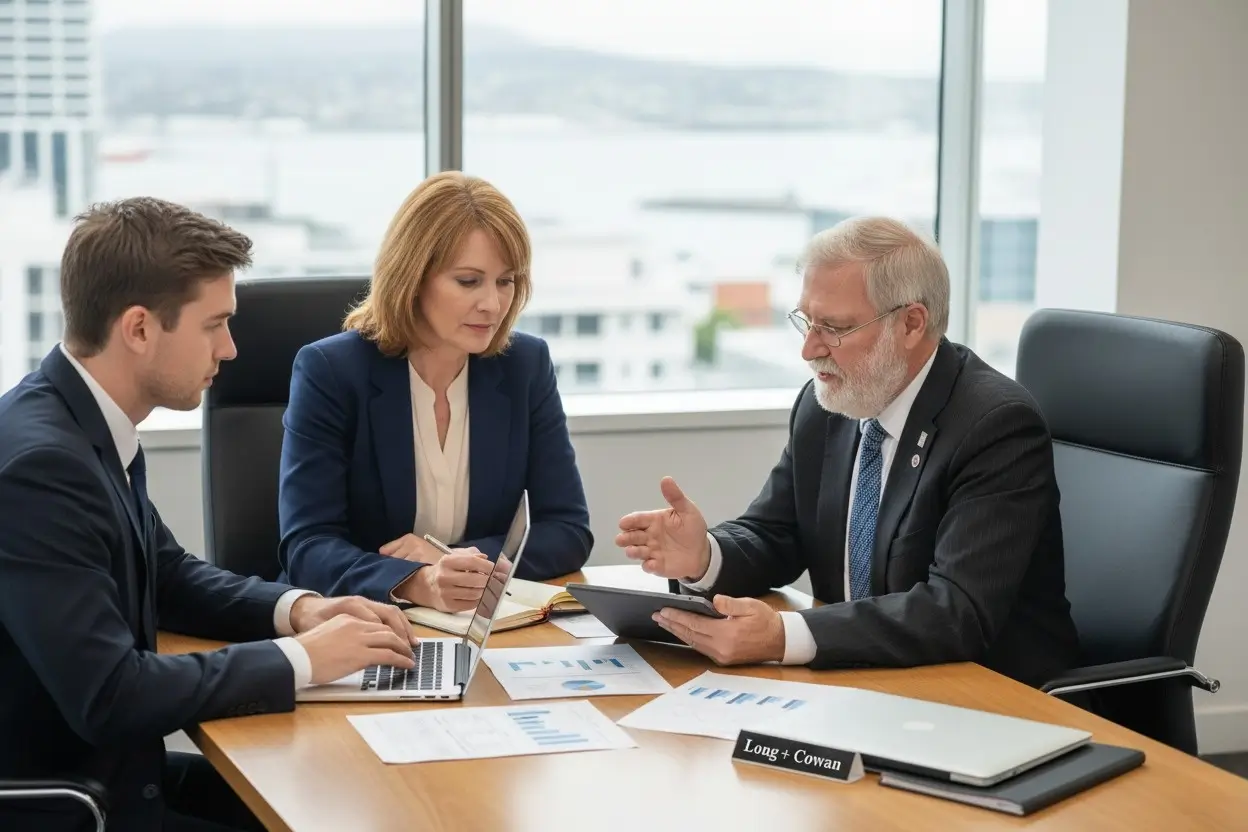Meetings are essential to collaboration, but too many waste time and energy. Without structure or purpose, they become distractions instead of tools for progress. Learning to run productive meetings ensures every minute contributes to meaningful outcomes.
At Long + Cowan, we often see Wellington businesses lose hours each week in meetings that could have been shorter, better planned, or replaced with simple updates. Turning meetings into productive, focused sessions restores efficiency and improves staff morale.
Recognising the True Cost of Poor Meetings
Unfocused meetings drain resources. Employees stop preparing, decisions are delayed, and enthusiasm fades. When participants leave unclear about outcomes, productivity suffers across the organisation.
Calculating the financial cost of wasted meetings is revealing. Multiply hourly staff rates by the number of attendees and duration, and you see how quickly costs rise. This awareness motivates teams to adopt more disciplined meeting habits.
Clarifying Purpose Before Scheduling
Before scheduling a meeting, define its purpose. Ask whether the discussion requires live collaboration or could be handled by email. Only hold meetings when conversation or decision-making genuinely benefits from group input.
Include the purpose in the invitation so participants arrive prepared. Common objectives include solving problems, reviewing progress, or confirming strategy. Clear purpose eliminates confusion and keeps the meeting on track.
Planning an Agenda That Drives Results
A focused agenda is the backbone of any productive meeting. Distribute it ahead of time, listing topics in priority order. Assign time limits to each item and specify who will lead the discussion.
Encourage participants to come ready with data or updates. An organised agenda prevents tangents and ensures all critical points are covered within the allotted time. Preparation converts meetings from passive discussions into active decision-making.
Selecting the Right Attendees
Invite only those directly involved in the topics at hand. A smaller, engaged group achieves more than a large room of bystanders. Every attendee should have a clear role or contribution.
If someone only needs information, share a summary afterward instead of including them in the session. Respecting people’s time demonstrates professionalism and encourages focus.
Starting and Ending on Time
Punctuality reinforces discipline. Begin meetings promptly and end when promised. Late starts and overruns signal poor management and frustrate participants.
Establish the expectation that meetings always finish on time. Doing so encourages concise contributions and builds respect for the process. Time discipline also keeps the day’s schedule intact, maintaining momentum.
Encouraging Participation and Balance
Balanced participation produces stronger outcomes. Some people dominate while others remain silent, but collaboration depends on hearing all perspectives. Invite input from quieter members and manage conversation flow respectfully.
Use techniques such as round-table discussion or rotating speaking turns. Equal participation builds engagement, ensuring that collective expertise shapes final decisions.
Keeping Discussion Focused
Tangents dilute effectiveness. When conversation strays, return to the agenda with gentle reminders. Ask whether the topic supports the meeting’s purpose; if not, record it for future review.
A focused meeting respects everyone’s time. Assign a timekeeper or facilitator to maintain flow and prevent drift. Concentrating on results rather than debate preserves energy and ensures progress.
Using Technology to Enhance Efficiency
Technology can support productive meetings when used correctly. Tools such as shared digital agendas, video conferencing, and collaborative documents streamline communication and reduce delays.
For Wellington businesses operating hybrid teams, platforms like Microsoft Teams or Zoom connect participants seamlessly. Screen sharing and live editing simplify coordination, keeping meetings short and efficient. Technology should serve discussion, not distract from it.
Recording and Tracking Actions
Every meeting should produce clear actions. Assign responsibility, set deadlines, and confirm next steps before ending. Written action lists prevent confusion and maintain accountability.
Distribute minutes within 24 hours while details remain fresh. Simple, concise summaries focusing on outcomes and deadlines keep everyone aligned. Regularly reviewing action progress prevents recurring issues.
Reducing Meeting Frequency
Too many meetings dilute productivity. Review your calendar regularly and remove sessions that no longer serve a purpose. Replace status updates with written summaries where possible. Fewer, better meetings deliver higher value.
At Long + Cowan, we encourage clients to review meeting structures quarterly. Adjusting frequency and format keeps communication effective without overwhelming staff schedules.
Building a Culture of Productive Meetings
Productivity begins with culture. When staff see that leadership values time and preparation, they respond in kind. Model strong meeting behaviour—arrive prepared, stay focused, and close decisively.
Encourage reflection after each session. Ask what worked and what could improve. Continual feedback sharpens future meetings, transforming them into consistent tools for progress.
Balancing Structure with Flexibility
Structure ensures order, but flexibility maintains creativity. Allow time for open discussion within defined limits. Innovation often arises from free conversation when managed efficiently.
The goal is not rigid control but balanced focus. Keep structure strong enough to prevent waste but adaptable enough to capture new ideas as they emerge.
Measuring Meeting Effectiveness
Track results by assessing whether decisions are implemented and objectives achieved. Measure follow-through, not attendance. If meetings fail to produce change, adjust structure or content accordingly.
Request feedback from participants to gauge clarity and value. Continuous review ensures that meetings remain aligned with business priorities and contribute to measurable improvement.
Applying Effective Meeting Principles Across Wellington Businesses
Across Wellington Central, Kelburn, and Thorndon, business leaders recognise that time is their most valuable resource. Turning routine gatherings into productive meetings enhances communication, builds teamwork, and drives efficiency.
When every meeting has purpose, structure, and follow-up, businesses move faster and make better decisions. Productive meetings strengthen culture and create accountability throughout the organisation.
Partnering for Organisational Efficiency
Long + Cowan works with Wellington businesses to develop systems that improve communication and efficiency. We help clients align financial management, planning, and collaboration to ensure every process delivers results.
For professional support in improving meeting structures and overall workplace productivity, contact us for more info by filling in an enquiry form or e-mailing or calling us during office hours. Productive meetings save time and build stronger teams.

